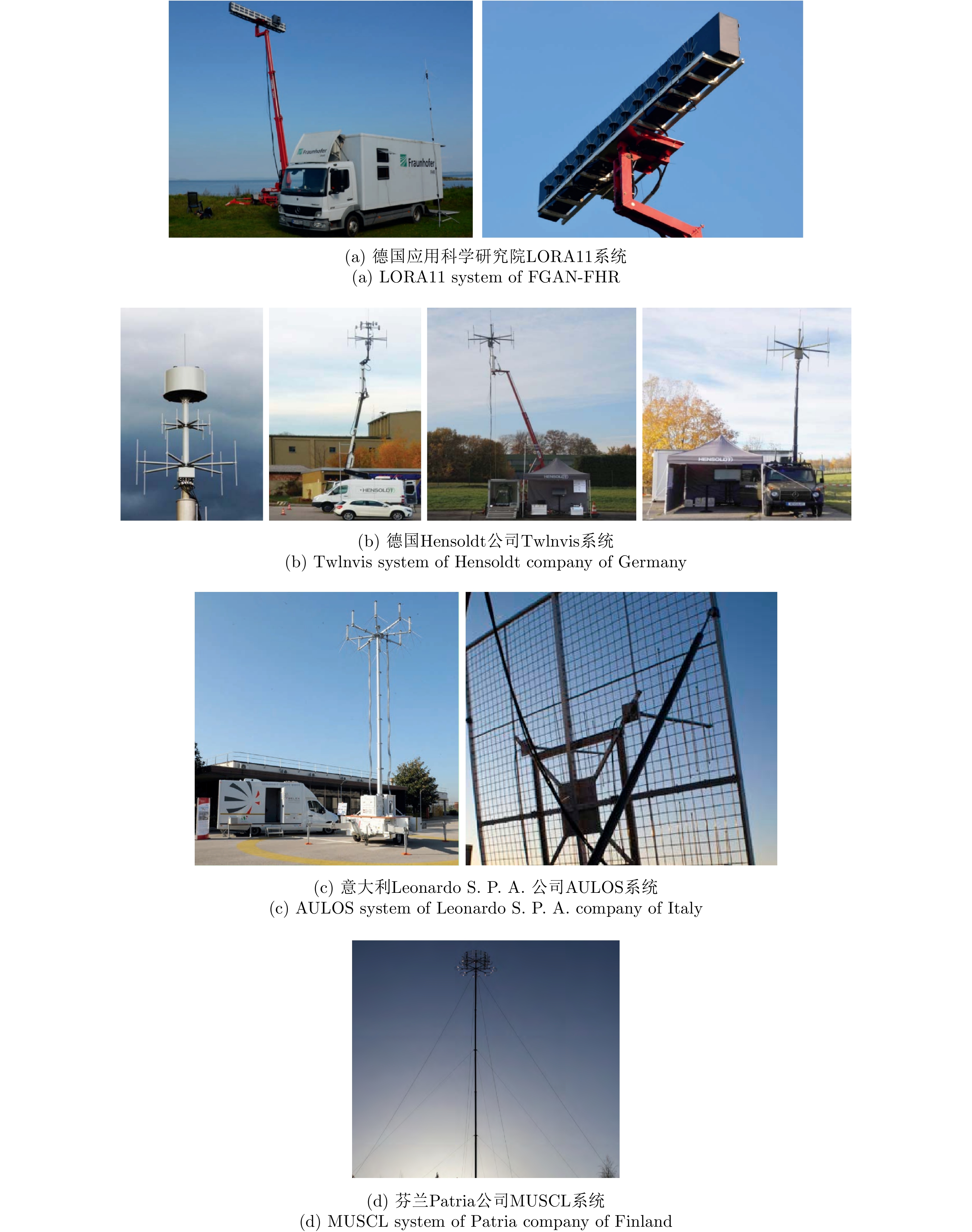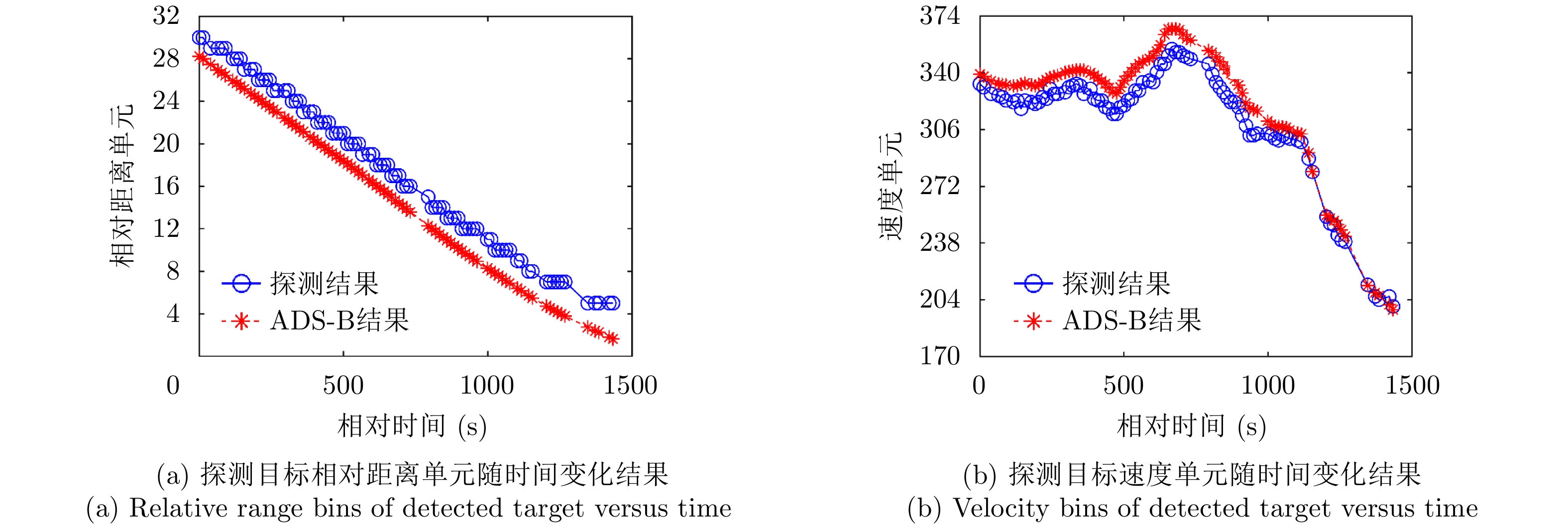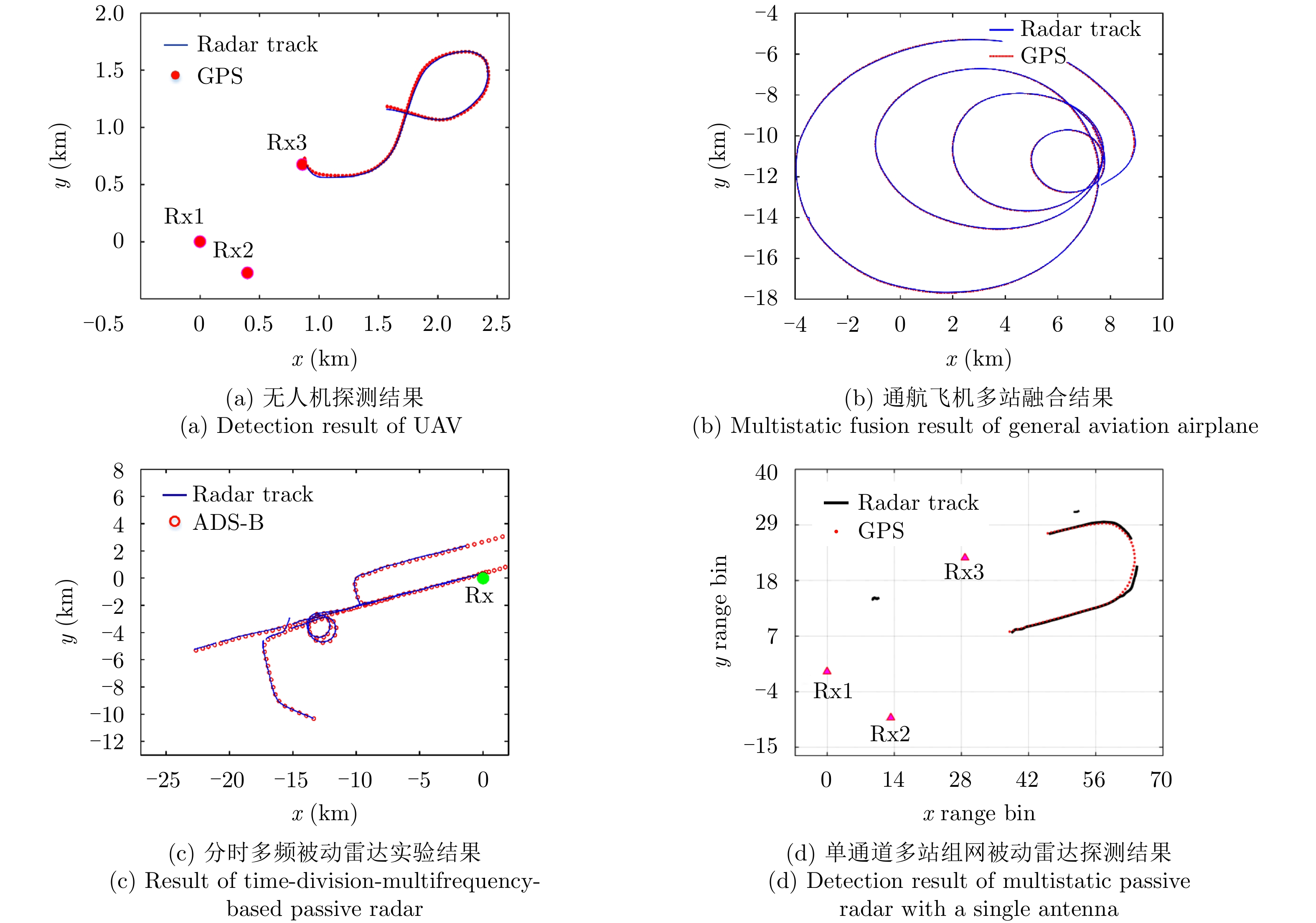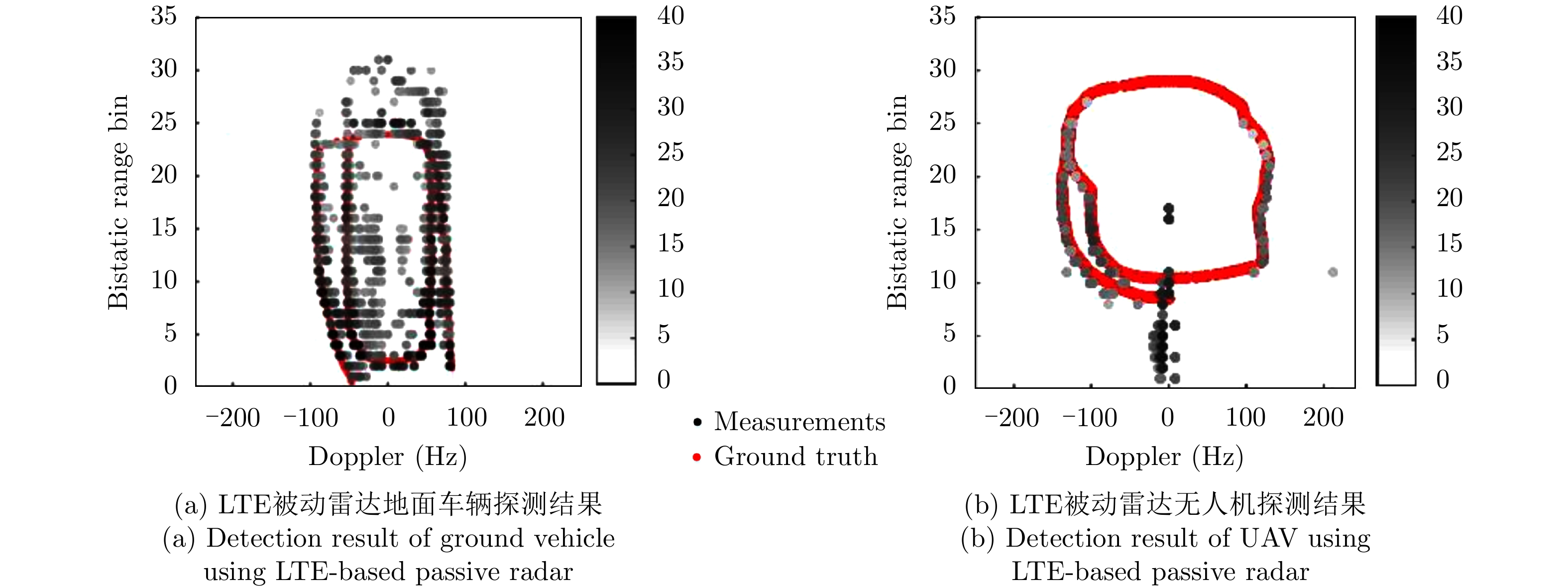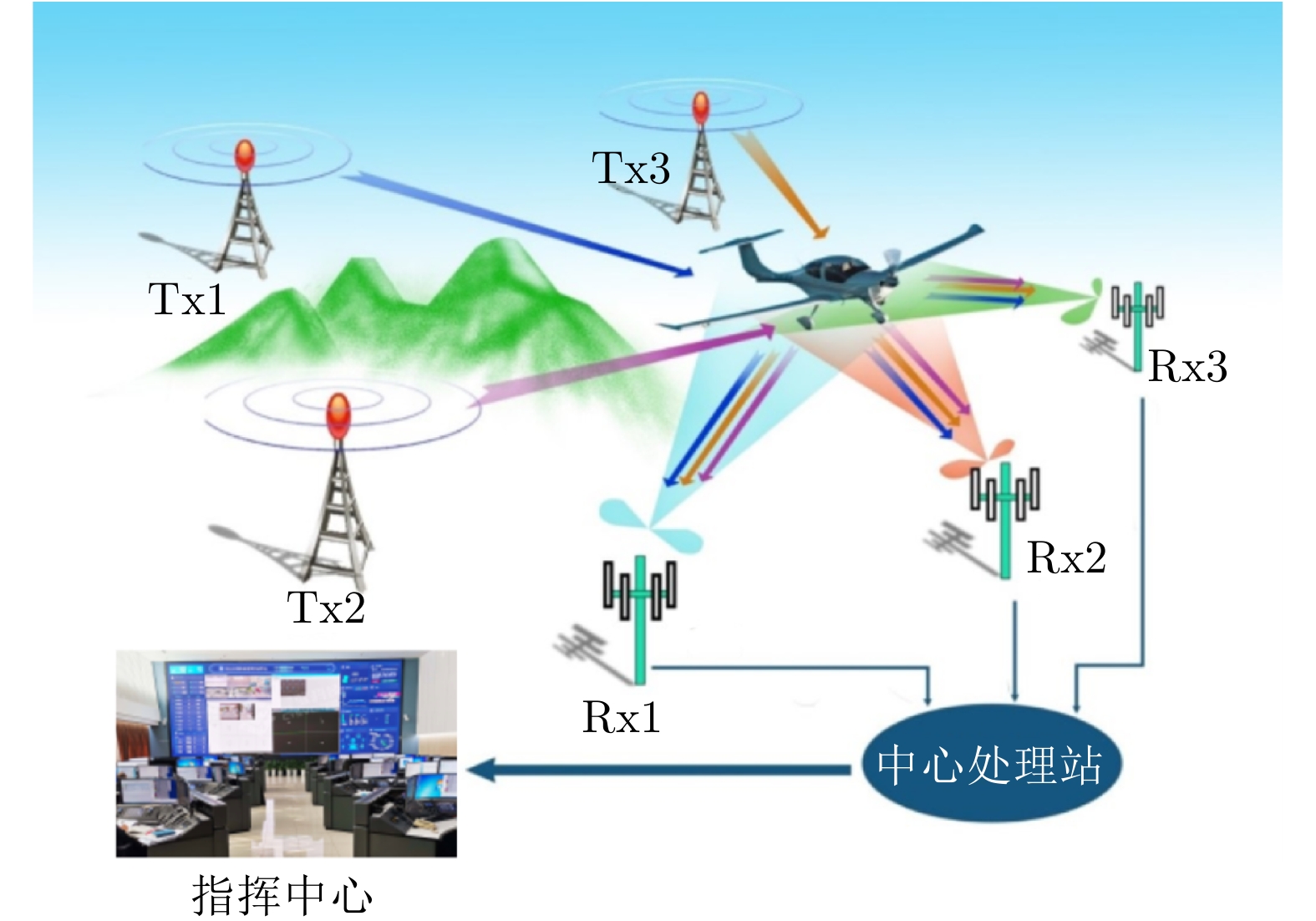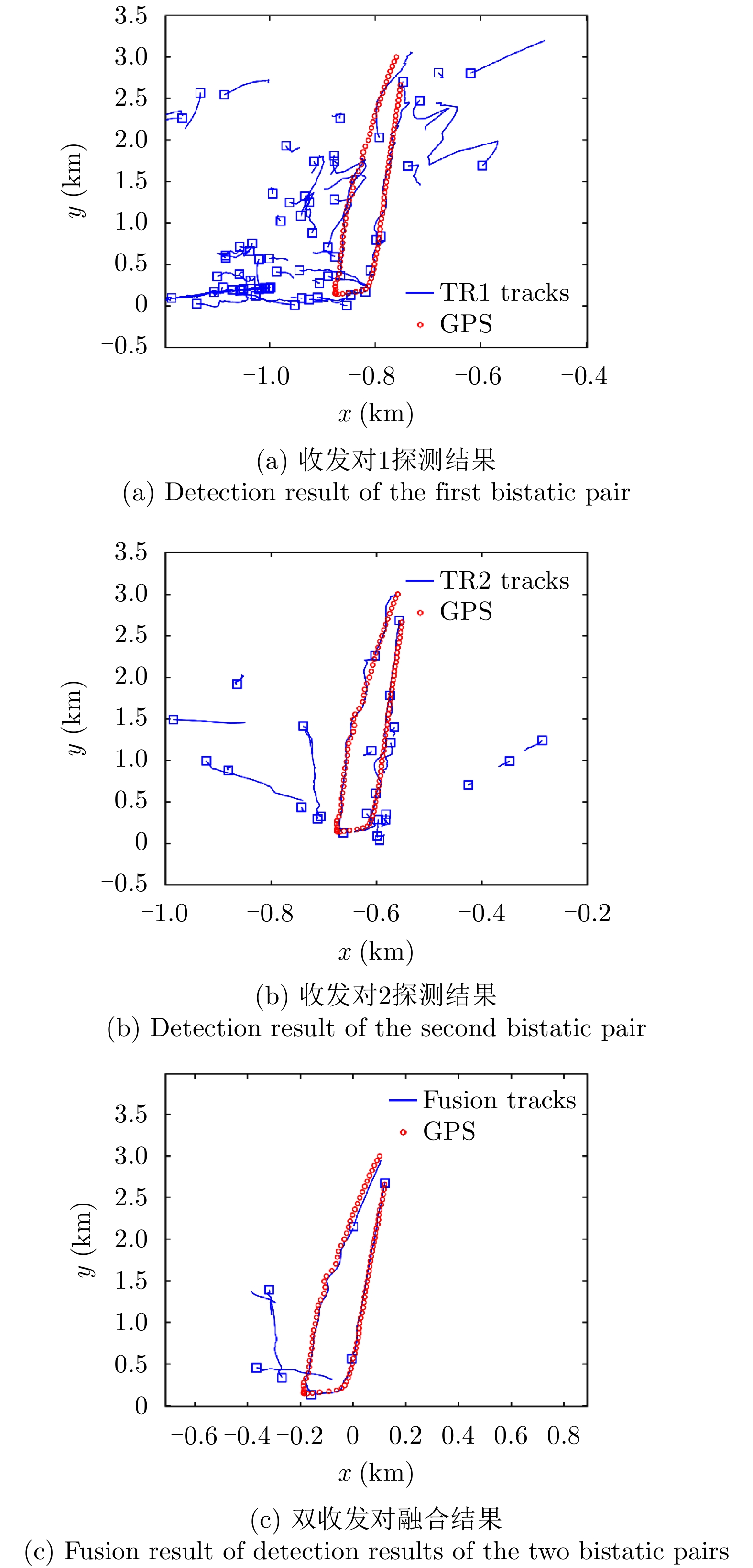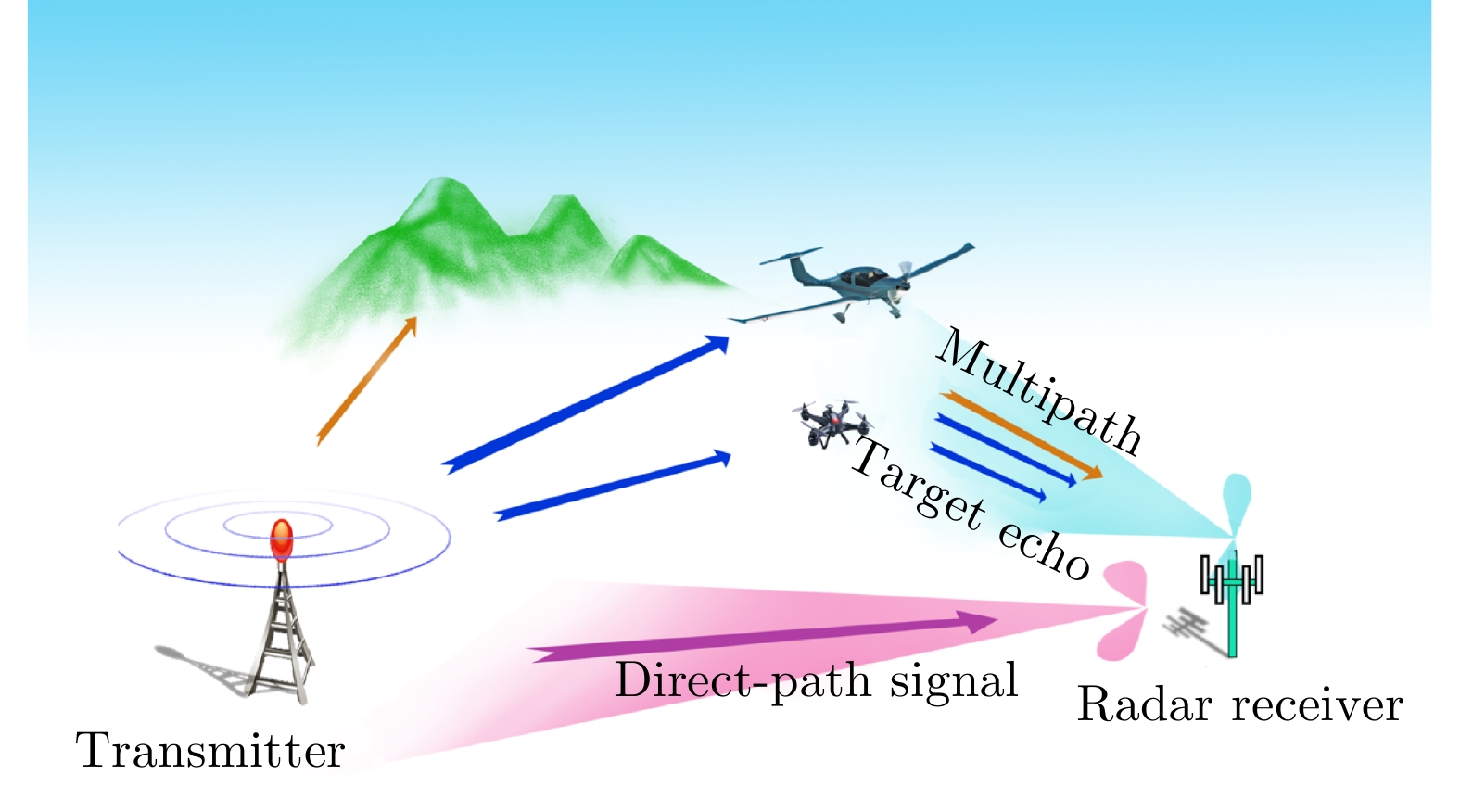
- Home
-
Articles & Issues

-
Data

- Dataset of Radar Detecting Sea
- SAR Dataset
- SARGroundObjectsTypes
- SARMV3D
- 3DRIED
- UWB-HA4D
- LLS-LFMCWR
- FAIR-CSAR
- MSAR
- SDD-SAR
- FUSAR
- DatasetinthePaper
- SpaceborneSAR3Dimaging
- DatasetintheCompetition
- Sea-land Segmentation
- SAR-Airport
- Hilly and mountainous farmland time-series SAR and ground quadrat dataset
-
Report

-
Course

-
About

-
Publish

- Editorial Board
- Chinese
| Citation: | WAN Xianrong, YI Jianxin, ZHAN Weijie, XIE Deqiang, SHU Kan, SONG Jiale, CHENG Feng, RAO Yunhua, GONG Ziping, KE Hengyu. Research Progress and Development Trend of the Multi-Illuminator-based Passive Radar (in English)[J]. Journal of Radars, 2020, 9(6): 939-958. doi: 10.12000/JR20143 |
Research Progress and Development Trend of the Multi-Illuminator-based Passive Radar (in English)
DOI: 10.12000/JR20143 CSTR: 32380.14.JR20143
More Information-
Abstract
Given the functions and performance advantages of passive radar, this paper first reviews the research history of passive radar for more than 80 years and then examines the research progress of related key technologies, including reference signal reconstruction, multipath clutter suppression, target detection, target tracking, and passive radar imaging. On this basis, the latest research results of typical experimental systems of passive radar abroad (particularly in European countries) are presented in terms of system structures, technical parameters, and performance indices. Then this paper focuses on the Multi-Illuminator-based PAssive Radar (MIPAR) series of Wuhan University in China. The target detection results of MIPAR in different frequency bands (HF/VHF/UHF/L) are given, that show the application potential of the MIPAR system in long-range early warning and close-range high-precision monitoring. Finally, the development trends of passive radar, including the integration of multiple illuminators, system network configuration, and intelligent signal processing, are discussed. -
1. Introduction
Passive radar, also known as a passive coherent location system, is a brand-new bistatic or multistatic radar system that uses the Illuminators of Opportunity (IOs) to detect moving targets[1-7]. The available IOs include terrestrial broadcast, television, and cellular signals. Passive radar is commonly equipped with two types of receiving channels: surveillance and reference channels. The surveillance channel is used to collect the target echo, while the reference channel is utilized to receive the direct signal from the IO. Passive radar first cross-correlates the signals of surveillance and reference channels to obtain the Range-Doppler (RD) map and then executes the detecting and tracking algorithms to observe moving targets. The working principle of passive radar is shown in Fig. 1. When modern frequency resource becomes increasingly crowded, passive radar is an appealing and advantageous surveillance technique because it does not require frequency allocation. This radar is also featured in silent operation, which offers an important sensing technique for the green development of the new era and future battlefield operations with low-to-zero radiation power.
Passive radar has gained close attention from academia, industry, and applied fields for its unique advantages over active radar. The exclusive merits of passive radar include (1) superb performance in low-altitude areas, (2) strong detection capability for low-velocity and small RCS targets, (3) flexible deployment, and (4) low network-based surveillance cost. Passive radar also has a broad perspective in military and civilian integrated fields due to its exclusive merits. In military fields, passive radar can be deployed in vital and sensitive areas, such as borders, offshores, islands, and reefs. The silent operation of passive radar promotes the early warning and anti-strike capabilities of the air-to-sea defense network. In civil applications, passive radar can be deployed to survey general aviation aircraft and illegal Unmanned Aerial Vehicles (UAVs) at airports or important venues. When passive radar is combined with the 2D video surveillance method, a 3D ground-to-air monitoring network can be constructed to provide a new surveillance alternative and location-based service for smart cities.
Dr. Wan (2012) concluded the status and trends of the UHF/VHF band signal-based passive radar at home and abroad[3]. To show the theoretical and application progress of passive radar over the past years, this paper first reviews the evolving history, the latest developments of key technologies, and several experimental systems of passive radar. The recent research results on passive radar by Wuhan University are also elaborated. The challenges and development trends of passive radar are finally summarized.
2. Overview of Researches and Developments of Passive Radar
As a mature technique, passive radar was created before World War II and has evolved with time. The Daventry experiment in England in 1935 revealed that the illumination from the shortwave BBC Empire transmitter can be used to detect aircraft targets 10 km away. During World War II, Germany designed a practical passive radar system called “Klein Heidelberg”[8], which receives the direct wave and target reflection from the transmission of England’s “Chain Home” active radar. “Klein Heidelberg” locates the aircraft by combining the Time-Difference-of-Arrival (TDOA) and the Direction-of-Arrival (DOA). This system has also successfully forecasted the bombing plane cutting through the English Channel.
During World War II, the innovation of the transceiver switch promoted the development of active radar, and the early hardware specifications and signal processing capabilities of monostatic active radar are better than that of passive radar. Thus, passive radar has undergone a long and tortuous period. The research interest in bistatic radars reemerged in the 1980s. During this time, an analog television signal-based passive radar system set up by Griffiths et al.[9] at University College London has successfully detected moving aircraft. In the 1990s, Howland[10] successfully tracked moving targets via analog television signals. The Lockheed Martin Company of the United States launched an FM-based commercial PR system called “Silent Sentry” in the late 1990s, which is a milestone product that designates the passive coherent location as the main detection schematic of passive radar.
Electronic countermeasures, anti-radiation missiles, and stealth technologies have rapidly developed over the past two decades. The bistatic or multistatic radar is advantageous over monostatic radar in solving these new challenges and has received renewed attention worldwide. During this period, the number of universities and research institutions that focus on passive radar research has steadily risen, and the depth and breadth of passive radar research have been markedly strengthened. The currently available IOs comprise broadcast and television signals[11-18], cellular signal[19,20], wireless local area network[21], navigation and communication satellite signal[22-25], as well as illuminations of active radar[26,27]. Owing to the development of digital radio technology, the bandwidth of the digital wireless signal is normally irrelevant to the broadcasting content and is a suitable IO for target detection. Thus, passive radar has undergone its golden times.
Digital broadcast and television signals are currently becoming increasingly popular. The wide coverage and stable waveform characteristic of the digital broadcast and television signals grant their competence over analog broadcast and television signals. Thus, the digital broadcast and television signals are practical IOs for passive radar, and this type of passive radar has been the most popular research topic. Most countries have independently proposed their standard of digital broadcast or television signals covering HF, VHF, and UHF bands[28-30]. The popularity and commercialization degree of digital broadcast or television signals have affected the development of this type of passive radar. Moreover, the digital broadcast or television signals of different countries are distinct in base-station placement, transmitting power, and signal format. Thus, this type of passive radar should consider the national conditions to promote system design. According to the publicly reported literature, studies of the passive radar in many European countries have a history of more than ten or even decades, and their technologies are at the forefront of the world. However, studies on the digital broadcast and television signals based on passive radar in China are delayed due to the low popularity of these signals, and most of the early investigations remain at the simulation level[31-33]. Fortunately, the domestic research on this type of passive radar has been accelerated recently due to the ongoing coverage of digital broadcast and television signals. Several domestic experimental systems have also been developed, and their feasibility has been comprehensively verified by field experiments[34-38].
3. Developments in Key Technologies
As mentioned above, passive radar relies on third-party noncooperative IOs for target detection. The uncontrollable transmitted signal, the complex propagation environments, and the serious interference of multipath clutter complicate the acquisition of target information. Many research institutions have made comprehensive explorations and obtained substantial advancements on the above issues in recent years. The following focuses on the research advancements of the main technologies in passive radar signal processing.
(1) Reference signal reconstruction. In passive radar, the reference signal is mainly used for time-domain clutter suppression and RD map calculation. Hence, the quality of the reference signal directly affects the detection performance. The reconstruction technique based on “modulation + remodulation” is usually adopted for the digital television-based passive radar[39-48]. The modulation mode of the digital television broadcast signals can be divided into two types. The first is the Cyclic-Prefix Orthogonal Frequency Division Multiplexing (CP-OFDM) techniques, such as the Digital Video Broadcasting-Terrestrial (DVB-T) signal and the China Mobile Multimedia Broadcasting (CMMB). The second is the Time-Domain Synchronous Orthogonal Frequency Division Multiplexing (TDS-OFDM) techniques, such as the Digital television Terrestrial Multimedia Broadcasting (DTMB). The reconstruction method is tailored in accordance with the signal modulation modes. Baczyk et al.[39] and Searle et al.[40] successfully recover the transmitted DVB-T signal by applying the pilots and the cyclic prefix to synchronization, channel estimation, and equalization. Using the signal detection principle, Refs. [41,42] successfully optimize the reconstruction methods in Refs. [39,40], respectively, which can significantly improve the quality of the reconstructed reference signal even in cases of low Signal-to-Noise Ratio (SNR). Refs. [43,44] provide some suitable adjustments considering parameter selection and signal processing structure to the reconstruction method of DVB-T, and the transmitted second-generation Digital TV Broadcast (DVB-T2) signal is successfully reconstructed. The reconstruction processes of CMMB signals are demonstrated in Ref. [45], and their effectiveness is validated by simulated and experimental data. Compared with CP-OFDM modulation, the TDS-OFDM signal has no pilot and uses a Pseudo-Noise (PN) sequence instead of a cyclic prefix as a guard interval. Hence, the aforementioned reconstruction methods are no longer applicable. The reconstruction method of the DTMB signal is investigated in Ref. [46], and the PN sequence is used for signal synchronization, channel estimation, and equalization. Finally, simulation and measured data verify that this method can obtain a relatively pure reference signal. The baseband sampling rate is equivalent to the signal bandwidth; thus, the reconstruction method proposed in Ref. [46] may lead to the aliasing of high-frequency signal components in practical applications. Ref. [47] studies the DTMB reconstruction method under the oversampling condition by using the improved least square algorithm for channel estimation to address the aforementioned problem. Compared with the reconstruction method of baseband data rate, oversampling processing can improve the quality of reconstructed signals. The reconstruction method proposed in Ref. [48] is applicable for all OFDM modulated signals. However, multiple sensors are required, which substantially increases the system complexity. Moreover, the SNR of the received signal from the echo sensor must be higher than a certain level to maximize the performance of this method.
Compared with the passive radar on a fixed platform, numerous Doppler spread clutter are found in the reference signal of passive radars based on mobile platforms (airborne and vehicle). Thus, the reference signal reconstruction may encounter additional challenges. Fortunately, the antenna diversity technology has been successfully applied to solve the reference signal reconstruction problem in the airborne passive radar[49]. In addition, the improved blind equalization method is an effective processing method to extract the pure reference signal[50]. Overall, the reconstruction methods for digital television broadcast signals are mainly divided into two categories according to the signal modulation mode. These methods reconstruct the reference signal from the perspective of signal recovery. The optimal reference reconstruction method, which combines the reconstructed signal quality with the time-domain clutter suppression performance, must be further studied to improve the detection performance of passive radars.
(2) Multipath clutter rejection. The strong direct-path signal and the multipath clutter reflected by ground objects (generally named multipath clutter) will cover up the target and reduce the system sensitivity. Therefore, effective methods should be conducted to reject the strong clutter in surveillance channels to reduce the influence of the residual clutter and its sidelobes after matched filtering on target detection. The clutter rejection method in passive radars can be roughly divided into two categories, namely the time-domain and spatial-domain methods. Time-domain methods mainly include conventional adaptive filtering and time-domain projection algorithms. Time-domain adaptive filtering algorithms mainly comprise the Least Mean Square (LMS), the Normalized LMS, the Gradient Adaptive Lattice (GAL), and the Recursive Least Square (RLS) algorithm. Among them, the first three algorithms are characterized by their low computational complexity and slow convergence. On the contrary, the convergence rate of the RLS algorithm is relatively fast, but its calculation complexity is relatively high. Represented by the Extended Cancellation Algorithm (ECA), the time-domain projection algorithm includes the ECA, the Batch vision of ECA (ECA-B), and the Sliding ECA (ECA-S). ECA-B uses piecewise processing based on ECA, which can reduce computational complexity and improve robustness in time-varying environments. ECA-S can effectively eliminate the modulation peaks of slow target echoes induced by the segment operation of ECA-B by sliding operations[51]. The performance of the aforementioned time-domain clutter rejection methods is limited by non-ideal factors, such as the fractional delay, carrier frequency offset, and channel frequency response. Ref. [52] effectively reduces the impact of these non-ideal factors and improves the robustness of clutter rejection by introducing sub-band processing. With the popularity of digital signals based on OFDM modulation, the subcarrier domain clutter rejection method has been developed[53,54]. The commonly used subcarrier domain algorithms mainly include Average Channel Response Filter on subCarrier (ACRF-C), ECA by subcarrier, and Reciprocal Subcarrier Detector. Ref. [55] comprehensively evaluates the performance of these subcarrier domain algorithms and reveals their inner mechanisms and mutual relationships. Refs. [56,57] combine the segmented smoothing idea with the ACRF-C algorithm, which can effectively improve the clutter rejection performance for nonstationary and Doppler extended clutters.
In addition to the above methods, the target information extraction methods without clutter suppression are also discussed in Refs. [58,59], in which the orthogonality between OFDM symbol subcarriers is utilized. Additionally, the spatial information can be used in multichannel passive radars to form deep nulls in the clutter direction adaptively and achieve clutter rejection[60-62].
Passive radar on mobile platforms (airborne and vehicle) has gradually become a new research focus due to its mobility and flexible deployment capability[63-66]. Unfortunately, the movement of the platform will induce Doppler expansion of clutter and submerge low-speed targets. Simultaneously, passive radar is also affected by the time-varying characteristics of transmission waveform and the array calibration error. In this condition, the performance of the Displaced Phase Center Antenna (DPCA) and the Space-Time Adaptive Processing (STAP) is limited. The multilevel extended clutter suppression idea of cascading the adaptive array error calibration, the conventional clutter suppression methods (ECA and LMS algorithms), the reciprocal filter, and the DPCA (or the STAP) algorithm perform well in practical applications[67-70].
Overall, many studies on clutter suppression methods have been conducted, but most of these studies mainly focus on a single method. Consequently, the parameter optimization and combination strategies of different clutter suppression methods and the coupling factors between clutter suppression and reference signal reconstruction must be further explored.
(3) Target detection. The passive radar receives the direct wave signal as well as the target echo from noncooperative illuminators and processes them coherently to realize target detection and extract target parameters. The main detectors of passive radar can be divided into the following three categories: Cross-Correlation Detector (CCD), Generalized Likelihood Ratio Test (GLRT) detector, and singular value detector. The cross-correlation detector is similar to the matched filter, which calculates the cross-ambiguity function of the reference and surveillance signals to realize the target detection [71-76]. In the presence of unknown parameters in the signal model, the generalized likelihood ratio detector can be obtained by substituting the maximum likelihood estimation of the unknown parameters into the likelihood ratio test[77-81]. The third type of detector is the singular value decomposition detector based on modern random matrix theory[82-84]. This type of detector considers the low-dimensional characteristics and the time-varying power of the target signal. The target SNR is generally improved to ensure detection performance. Such an improvement can be achieved by using a variety of methods, such as single-frame long-time coherent accumulation or multiframe noncoherent accumulation. The current research hotspot in the process of long-time accumulation is the effective compensation for the target range and Doppler migrations to improve the robustness of the algorithm to maneuvering targets[85-88]. Researchers at the University of Rome, Italy, took the polarization diversity passive radar based on FM broadcast and DVB signals as the research object and proposed the polarization generalized likelihood ratio detection method. Their experimental results show that this method can effectively improve the target detection performance[89-91]. In addition, the multifrequency joint detection method can effectively alleviate the impacts of non-ideal factors, such as the unstable transmission waveform (including FM broadcast signal) and the flicker of Radar Cross-Section (RCS), and significantly improve the detection probability of targets[92-94].
(4) Target tracking. The performance of the passive radar with single bistatic pair is limited. The spatial and frequency diversities can be deployed to expand the dimension of information acquisition and obtain accurate target states through target tracking and information fusion in multistatic passive radars. Thus, the multistatic passive radar has attracted extensive attention. Among them, the recent research advancements mainly involve target tracking in Single Frequency Network (SFN) passive radar, cognitive tracking of passive radar, and data fusion of multiband passive radar. Multiple transmitters transmit the same signal at the same frequency simultaneously; thus, the association between measurements and transmitters is blurred. Refs. [95-100] study the ambiguity problem in SFN passive radars, and the data association between measurements, transmitters, and targets are correctly obtained, which finally leads to good target tracking results. Refs. [101,102] propose a concept of symbiotic radar, which uses part of the communication network for passive radar detection. This concept independently plans the transmitter of the communication network and the receiver of the passive radar through the tracking effect, thus finally realizing the purpose of cognitive tracking. Refs. [103-106] proposed a method to realize target tracking and data fusion by combining UHF and VHF band passive radars and performed numerous experiments to verify the feasibility of the system. The external illuminators present new challenges to the target tracking of passive radar. Therefore, the current research focus is to improve the mainstream tracking algorithm to solve these problems. However, the large-scale network partition handover and intelligent tracking in networked passive radar must still be further studied.
(5) Passive radar imaging. The research on passive radar systems in target detection, tracking, and positioning has made remarkable progress. Compared with target measurement and tracking, target images can provide rich and fin features, which are conducive to the classification and recognition of targets. Therefore, the research on passive radar imaging systems has attracted increasing attention from scholars at home and abroad. Compared with the imaging system of active radars, bistatic imaging has certain system advantages. First, the positions of transmitters and receivers can be flexibly configured to meet the practical application needs, such as forward-looking, combined, interference, and multipolarization imaging. Second, the passive radar system is easy for multistation networking and multifrequency information fusion. This system can fully obtain the target scattering information of different bands and perspectives, establish the target three-dimensional observation information, and realize the target three-dimensional imaging. Refs. [107,108] theoretically analyze the spatial resolution performance of Passive Bistatic Inverse Synthetic Aperture Radar (PB-ISAR). On this basis, the field experiments of target imaging, including aircraft and cargo ships, are conducted. The multibandwidth synthesis is realized by using three adjacent DVB-T signals to improve the imaging quality. The experimental results verify the accuracy of the theoretical model. Ref. [109] imaged the same cooperative ship by using DVB-T and DVB-S signals simultaneously. The experimental results show that the target size and main scattering points can be effectively estimated and distinguished under the two illumination sources, which lay a foundation for further information fusion. Ref. [110] effectively fused the spatial diversity information into the imaging process of the DVB-S signal to improve the imaging effect. The feasibility of Passive Bistatic Synthetic Aperture Radar (PB-SAR) has also been verified by experiments due to the development of mobile platform passive radar systems. Refs. [111-113] show the imaging results of airborne PB-SAR on the ground scene based on DVB-T signals. Refs. [114,115] present the imaging results of multistatic PB-SAR based on satellite navigation signals.
Most passive radar imaging systems are currently performed under the framework of ISAR/SAR imaging technology. As its imaging basis, the matched filtering is a linear process, which has the advantages of simple implementation and stable performance. However, the matched filtering performance is usually limited by the insufficient signal bandwidth of IOs, which affects the resolution of adjacent targets. The passive radar imaging algorithm based on sparse representation can effectively overcome the shortcomings of traditional imaging algorithms and achieve high-precision imaging. Ref. [116] utilized multiple non-adjacent DVB-T signals for bandwidth synthesis to achieve high-resolution ranges. However, the discontinuity between signals introduces high grading lobes. The compressed sensing method is used in Ref. [116] to reduce the grating lobe effectively and improve the imaging quality significantly. Ref. [117] used the simultaneous orthogonal matching pursuit algorithm to alleviate the influence of target scattering coefficient flickering with carrier frequency and observation angle on imaging results in multistatic airborne PB-SAR systems and realized accurate imaging of observation scenes.
4. Typical Passive Radar Systems and Experiments
Radar research is an experimental science, of which experimental verification is an essential part. With the popularization of digital broadcasting, television, and communication signals and the breakthrough of key technologies, several experimental passive radar systems have been successfully developed and reported publicly.
4.1 Typical Passive Radar Systems Abroad
In recent years, the German Academy of Applied Sciences (FGAN-FHR) has developed a series of passive radar experimental systems, including DELIA (DAB Experimental radar with LInear Array), PETRA (Passive Experimental TV RAdar), and CORA (COvert RAdar) systems. The parameters of these experimental systems have been introduced in Ref. [3]. In addition, FHR has cooperated with the Norwegian National Defense Research Institute to develop the LORA11 (linear array covert radar) system based on DVB-T signals[118] (Fig. 2(a)). LORA11 uses 11 vertically polarized disk-cone antennas to form a receiving array with an array element spacing of 0.36 m, which can achieve 60° azimuth coverage. Experimental results show that the system can effectively detect aircraft within 10 km in the altitude range of 600–700 m.
The German Hensoldt company has successively launched several versions of the TwinVis system[119,120] (Fig. 2(b)) since 2008. Hensoldt showed the latest version of TwinVis at the 2018 Berlin international air show. The system can simultaneously use 16 FM signals and 5 DAB/DVB-T signals to achieve target detection. Simultaneously, the system can set up a processing center to fuse the information from four passive radars to obtain complete target information. The system adopts a three-layer receiving array configuration of 7-7-16 elements from bottom to top, which can realize 360° coverage of the target and the measurement of the target height. The experimental results show that the maximum detection distance of the system is more than 200 km, and the range accuracy is better than 250 m.
The AULOS system (Leonardo S.P.A. company in Italy) uses FM and DVB-T signals as illuminators[121,122]. In this system, the FM signal is mainly used for monitoring the long-distance and wide-range air targets, and the DVB-T signal is utilized for surveillance of low, slow, and small targets in the air and coastal monitoring. The system includes two versions: fixed and mobile platforms (Fig. 2(c)). The mobile platform version adopts an 8-element uniform dipole circular array as the receiving array to realize 360° coverage of the detection area. The fixed platform version has a receiving array with four array elements, which can simultaneously cover a 120° target detection area and measure the pitch angle of the target. The experimental results show that the system can detect air targets at a distance of 200 km and effectively monitor the coastline.
The Patria company of Finland released the MUltiStatic Coherent Location (MUSCL) system[123] (Fig. 2(d)) in 2018. This system uses FM and DVB-T signals to form a multistatic receiving mode, which can achieve 360° coverage of targets within hundreds of kilometers, track more than 100 targets simultaneously, and distinguish fixed-wing aircraft, propeller aircraft, and helicopters.
In addition to the above VHF/UHF band passive radar experimental systems, the passive radar systems based on Global Navigation Satellite System (GNSS), Long-Term Evolution (LTE), WiFi signal, and other illumination sources are also currently being developed and gradually applied[124-129].
4.2 MIPAR Passive Radar Series of Wuhan University
Relying on the national key discipline of radiophysics and supported by a series of national key projects, the radio wave propagation laboratory of Wuhan University has continuously cultivated the field of passive radar for more than ten years. The passive radar system and its networking technology based on digital broadcast television signals of China have been systematically studied. The multiband multiarray Multi-Illuminator-based Passive Radar (MIPAR) system has been developed, and long-term field experiments have been conducted to verify its effectiveness and robustness. MIPAR has been successfully applied in many national key demand fields. The relevant systems and typical detection results are introduced as follows.
(1) HF band passive radar. Digital Radio Mondiale (DRM) digital broadcasting standard is the only standard of global shortwave digital sound broadcasting determined by ITU-R. In 2011, the team of Wuhan University conducted the first domestic passive radar research experiment based on DRM signal, which confirms the feasibility of this technology[18,130,131]. The influence of ionospheric traveling interference, radio frequency interference and other factors on the system is then comprehensively analyzed [132-134], and a radio frequency interference suppression method based on maximum likelihood estimation is proposed. Aiming at the problem of target positioning under the combination mode of sky and ground waves, the team proposed a new positioning method based on the arrival elevation of direct waves and analyzed the positioning accuracy of this method[135]. Numerous shortwave broadcasting, communications, and radar signals are observed in the shortwave band. Owing to the continuous deepening of theoretical research and the increasing improvement of the experimental system, the team also performed target detection experiments based on multi-illuminators of HF bands in several places across the country in recent years. Experimental results show that the radar system can realize over-the-horizon detection and continuous tracking of moving targets. Fig. 3 shows the results of aircraft target detection in a test. The change trend of target bistatic range and velocity obtained by radars are in good agreement with the corresponding Automatic Dependent Surveillance-Broadcast (ADS-B) information, which proves the accuracy of radar detection results. High-frequency passive radar integrates advantages of traditional high-frequency sky/ground wave and bistatic/multistatic passive radars. This radar can also realize long-range target early warning and demonstrates broad application prospects.
(2) VHF/UHF band passive radar. The team of Wuhan University has successfully developed a multichannel VHF/UHF band passive radar system. The system has a compact structure, flexible architecture, and stable performance. This system can complete the task of 24/7 all-weather real-time target monitoring. The system can be compatible with DTMB/CMMB (China), DVB/DVB-T2 (European)/FM/CDR, and other signals. According to the actual detection requirements, the system can choose the uniform circular array as the receiving array to realize the omnidirectional coverage of the detection area or the uniform linear array as the receiving array to realize the reliable monitoring of key areas. Using this experimental system, the team has performed numerous experiments on UAVs, general aviation aircraft, civil aircraft, and other types of targets in more than ten places across the country, breaking through a series of key technologies in signal and data processing, such as reference signal reconstruction, clutter suppression, target detection, target tracking, and data fusion[47,52,87,136-144]. The developed radar system also conducted application demonstrations in multiple general aviation airports in Hubei, Henan, and Sichuan provinces. In 2017, the team first reported the detection results of UAVs using passive radar based on digital TV signals at the IEEE International radar conference, showing the potential application of this technology in the field of “low, slow, and small” target monitoring[141]. The team takes advantage of the easy networking of passive radar to perform a multistation networking fusion experiment to build a tight low-altitude surveillance network. By integrating the information obtained by multiple transceiver pairs, the radar effectively compensates for the detection blind area, expands the detection range, and improves the detection accuracy[142]. The experimental results show that the horizontal positioning accuracy of the system for general aviation aircraft is better than 50 m, the speed accuracy is better than 1 m/s, and the data update rate is less than 1 s. Typical detection results are shown in Fig. 4(b). The team also performed time-division multifrequency experiments[143], which use a single receiver to obtain the spatial diversity information of the target, to further reduce the cost and improve the system flexibility. Simulated and experimental results indicate that its target detection performance is close to that of the simultaneous multifrequency system. The detection results are shown in Fig. 4(c). In addition, the team made experimental advancements in the single-channel multistatic networking system[144], as shown in Fig. 4(d).
(3) Passive radar system based on LTE signal. As the fourth-generation digital mobile communication standard, LTE has many characteristics, such as wide distribution, large redundancy, and easy networking. Therefore, LTE has become a widely concerned IO[145,146]. The team of Wuhan University comprehensively analyzed the LTE signal structure and effectively suppressed its inter-frame blur band[147]. On this basis, a highly integrated and miniaturized multichannel passive radar system based on AD9361 was independently designed and developed. The system was used to conduct the first ground and low-altitude target detection experiment based on the LTE signal (1867.5 MHz FDD-LTE) in China[148,149]. Fig. 5 shows that the system realizes the continuous monitoring of ground vehicles and UAVs. The radar detection results are consistent with the real target information, which confirms the accuracy of the results and shows the application potential of LTE passive radar.
5. Development Trends of Passive Radar
At present, the theoretical research of passive radar has been fully verified, many breakthroughs have been made in key technologies of passive radar, and the system feasibility of passive radar has been widely recognized. However, a large gap still exists for the existing passive radar to meet the needs of practical applications. The main bottleneck problems of the existing passive radar can be summarized as follows.
(1) The environmental adaptability of passive radar is insufficiently strong. Passive radar is a type of electromagnetic environment-dependent radar. Its architecture, processing scheme, and performance are determined by the space-time coverage and signal characteristics of the IO. When passive radar is deployed in different places, determining the location, frequency, mode, power, and other parameters of the IOs in advance is necessary, and the hardware and software configurations should be customized correspondingly.
(2) The robustness of passive radar is insufficiently high. The existing passive radar is usually based on a single (or single class) IO. In addition to the waveform characteristics, the performance of passive radar is also affected by the system conditions, station settings, and surrounding environments. The technical index measured under a certain IO in a certain place may change elsewhere, resulting in the unstable performance of the passive radar.
(3) The intelligence of passive radar is relatively low. The performance of passive radar is closely related to the signal waveform, electromagnetic environment, physical channel, and system configuration scheme. The existing processing methods often require human judgment and intervention to approach the best working point. The specific system configuration scheme remains unchanged for a long time after its identification. Dynamic adjustment mechanisms and intelligent processing means based on on-site state evaluation feedback are also lacking.
The traditional bistatic architecture of single transceiver pairs should be broken through to solve the bottleneck problems of the passive radar in environmental adaptability, index robustness, and intelligent processing. Based on the electromagnetic environment recognition, optimal system configuration, and intelligent information processing, building passive radar networks with multiple IOs may be a promising solution to break through the above bottlenecks. Fig. 6 shows that MIPAR has strong plasticity in technical system and application mode, which can substantially expand the information acquisition dimension.
The overall development trend of passive radar networks can be summarized in the following three directions.
(1) Integration of multiple IOs. With the rise of digital broadcasting, digital television, and digital communication network in the world, the optional IOs of passive radar have expanded from analog modulation signals, such as FM broadcasting and TV sound, to digital signals, including digital audio broadcasting (DAB/CDR), digital television (DVB/DTMB), satellite, mobile communication (LTE), and wireless local area network (WiFi). This expansion provides favorable conditions for the integration of multiple IOs.
The system configuration, detection power, and detection accuracy of passive radars are affected by the waveform characteristics, transmission power, and coverage of the IOs. Therefore, passive radar systems using a single IO are generally suitable for specific application scenarios. For example, passive radar based on FM broadcast signals is used for long-distance and large-scale air target monitoring but cannot be competent for the task of “low, slow, and small” target monitoring in key areas. On the contrary, the miniaturized passive radar based on digital TV signals can play an important role in the construction of a low-altitude surveillance network. However, addressing the requirements of long-range early warning of civil and fighter aircraft is difficult. The integration of multiple IOs can help effectively expand the application scenarios, improve the target detection performance, and reduce the dependence on the environment. First, the passive radar must be endowed with the capability of radiation source screening through the design idea of software and modular integrated systems. Then, the multidimensional information provided by multiple transceiver pairs should be effectively integrated and utilized. The integration of multiple IOs with different frequency bands (HF/VHF/UHF), systems (analog/digital), and coverage modes (multifrequency network/ SFN) is complementary. For example, the TwinVis system developed by Hensoldt company of Germany simultaneously uses FM, DAB, and DVB-T signals as IOs for target detection, which is a typical integration attempt of multiple IOs[106,150].
The integration of multiple IOs will be an important measure for passive radar systems to meet the needs of high-precision (large signal bandwidth), long-distance (large signal transmission power), large-range (wide signal coverage), and multiscene (ground, sea, and air target detection) detection. The development of multi-illuminator integrated systems and multi-illuminator information mining and fusion will be the focus of the next research.
(2) Network configuration. The location method based on the azimuth and distance is adopted in passive radars with single transceiver pairs. The positioning error of this method increases with the oblique distance. Thus, the detection accuracy within the radar coverage cannot be fully guaranteed. Simultaneously, with the change in target attitude and the occlusion of buildings and mountains, ensuring the continuous detection of targets is difficult. By contrast, the passive radar network with multiple transceiver pairs can markedly improve the positioning accuracy of targets through the TDOA positioning method. Moreover, the detection blind area can be reduced by the reasonable placement of radar receivers. Therefore, networked detection is an important and attractive development direction in passive radar. Such detection can provide comprehensive and detailed detection results by maximizing the spatial, frequency, and polarization diversities in the process of multistation information fusion.
Compared with passive radars with single transceiver pairs, networked passive radars have advantages in detection accuracy, stability, and reliability. Fig. 7 shows the detection results of multi-illuminator passive radars[142]. The tracking results after fusion are significantly improved compared with those of single passive radars in continuity, accuracy, and number of false tracks. Many research institutions and universities perform investigations on multistation detection[151,152], multistation positioning[153-155], multistation tracking, and information fusion[105,156-159]. The detection performance of networked passive radar will be largely affected by the placement of radar receivers and the selection of transmitters.[160,161]. However, studies on these issues are relatively lacking.
Overall, investigations on the networked passive radar are currently in the development stage. The core problems, such as the optimal configuration of transceiver stations, joint positioning of multiple transmitters and receivers, data association, and large-scale network partition handover, still need to be studied and broken through.
(3) Intelligent information processing. Passive radars use noncooperative illuminators whose transmitting stations, radiation parameters, and signal waveforms are not designed for radar target detection. Therefore, these radars are highly dependent on the environment, and the signal processing process is substantially more complex than that of active radar. Under these conditions, intelligent information processing, which can autonomously sense the detection environment and make adaptive adjustments, will markedly improve the detection effectiveness of passive radars. Intelligent information processing can be applied throughout the passive radar acquisition and processing chain, from IO selection to target identification. Intelligent search for the best possible IO, intelligent signal processing[162], and intelligent target classification and identification[163-165] will all be part of the processing. The process employs a “smart” brain to compensate for the shortcomings of the passive radar system, transforming the radar into an intelligent system capable of “thinking and learning” and adapting to complex detection environments.
Intelligent signal processing has a wide range of potential applications in passive radar processing. Considering reference signal reconstruction, a combination of electromagnetic environment perception and channel-independent modeling will help improve channel estimation and equalization performance, resulting in a clean reference signal. An intelligent sensing module for clutter characteristics (comprising components such as clutter type determination, clutter distribution modeling, and clutter parameter estimation) can be established to provide useful a priori information on clutter. Simultaneously, the combination of time-, frequency-, spatial-, and subcarrier-domain clutter suppression methods can be independently optimized, which will help significantly improve clutter suppression performance. Considering target detection, refined modeling and feature learning of residual clutter or complex clutter areas can be performed to extract personalized information regarding clutter and targets, which may be helpful for improving the detection probability of weak targets and reducing false alarms. Fig. 8 depicts the conventional CFAR and the multilayer perceptron detection results[166], demonstrating the superior performance of the intelligent detection algorithm. Considering target tracking, self-calibration of track errors can be accomplished by comparing and learning the radar track and the corresponding reference information (such as ADS-B, GPS, and AIS information). Simultaneously, self-assessment of the target movement situation can help ensure target tracking continuity and improve track quality. Considering target state monitoring and target classification, intelligent information mining and classification algorithms based on physical features, such as phase, SNR, micro-Doppler, and track morphology, are expected to deviate from traditional image recognition-based processing frameworks. Simultaneously, the increasingly rich dimensions of information acquisition lay the groundwork for accurate target classification, target motion prediction, and other promising applications. Intelligent signal processing has considerable potential but is still in its early stages and requires additional in-depth research. Furthermore, in addition to using intelligent algorithms to improve the performance of a single processing module, the system is required to adjust processing parameters intelligently, select optimal processing algorithms, and the most efficient processing flow based on factors such as the detection environment and the type of targets.
6. Conclusion
Currently, the research on single signal processing technologies, such as reference signal purification, clutter suppression, and coherent detection of passive radar, has been relatively in-depth, and its system feasibility has been widely recognized. The research on the passive radar is in the stage of prosperity, with many different ideas and schemes. However, with the deepening of research, the shortcomings of passive radar detection performance limited by external IOs have become increasingly prominent, which objectively urges the germination of ideas of “networking detection” and “intelligent information processing.” In information processing, the intelligent processing idea driven by machine learning is first explored. In addition to the track information, comprehensive and fine features of the targets are extracted for target classification and recognition. Therefore, the development of passive radar presents the trend of networking, intelligence, and multi-illuminator integration.
The combination of networking and intelligence in MIPAR forms a closed-loop process, which increases the autonomy of the original pure passive working mode of passive radars and qualitatively improves the overall performance of the passive radar. Therefore, in-depth research on the theory and method of intelligent detection in passive radar networks is of considerable importance to break through the bottlenecks in the development of passive radar technology, solve the deep application problem of passive radar, and promote the development of new system radar technology.
-
References
[1] GRIFFITH H D and BAKER C J. Passive coherent location radar systems. Part 1: Performance prediction[J]. IEE Proceedings – Radar, Sonar and Navigation, 2005, 152(3): 153–159. doi: 10.1049/ip-rsn:20045082.[2] BAKER C J, GRIFFITHS H D, and PAPOUTSIS I. Passive coherent location radar systems. Part 2: Waveform properties[J]. IEE Proceedings – Radar, Sonar and Navigation, 2005, 152(3): 160–168. doi: 10.1049/ip-rsn:20045083.[3] 万显荣. 基于低频段数字广播电视信号的外辐射源雷达发展现状与趋势[J]. 雷达学报, 2012, 1(2): 109–123. doi: 10.3724/SP.J.1300.2012.20027.WAN Xianrong. An overview on development of passive radar based on the low frequency band digital broadcasting and TV signals[J]. Journal of Radars, 2012, 1(2): 109–123. doi: 10.3724/SP.J.1300.2012.20027.[4] 宋杰, 何友, 蔡复青, 等. 基于非合作雷达辐射源的无源雷达技术综述[J]. 系统工程与电子技术, 2009, 31(9): 2151–2156, 2180. doi: 10.3321/j.issn:1001-506X.2009.09.028.SONG Jie, HE You, CAI Fuqing, et al. Overview of passive radar technology based on non-cooperative radar illuminator[J]. Systems Engineering and Electronics, 2009, 31(9): 2151–2156, 2180. doi: 10.3321/j.issn:1001-506X.2009.09.028.[5] KUSCHEL H, CRISTALLINI D, and OLSEN K E. Tutorial: Passive radar tutorial[J]. IEEE Aerospace and Electronic Systems Magazine, 2019, 34(2): 2–19. doi: 10.1109/MAES.2018.160146.[6] 郑恒, 王俊, 江胜利, 等. 外辐射源雷达[M]. 北京: 国防工业出版社, 2017: 1–10.ZHENG Heng, WANG Jun, JIANG Shengli, et al. Passive Bistatic Radar[M]. Beijing: National Defense Industry Press, 2017: 1–10.[7] 吕晓德, 仲利华, 刘忠胜, 等. 无源相参雷达系统 —原理、信号处理及设计[M]. 北京: 科学出版社, 2019: 1–22.LV Xiaode, ZHONG Lihua, LIU Zhongsheng, et al. Passive Coherent Radar System—Principle, Signal Processing and Design[M]. Beijing: Science Press, 2019: 1–22.[8] GRIFFITHS H and WILLIS N. Klein Heidelberg—the first modern bistatic radar system[J]. IEEE Transactions on Aerospace and Electronic Systems, 2010, 46(4): 1571–1588. doi: 10.1109/TAES.2010.5595580.[9] GRIFFITHS H D and LONG N R W. Television-based bistatic radar[J]. IEE Proceedings F - Communications, Radar and Signal Processing, 1986, 133(7): 649–657. doi: 10.1049/ip-f-1.1986.0104.[10] HOWLAND P E. Target tracking using television-based bistatic radar[J]. IEE Proceedings - Radar, Sonar and Navigation, 1999, 146(3): 166–174. doi: 10.1049/ip-rsn:19990322.[11] HOWLAND P E, MAKSIMIUK D, and REITSMA G. FM radio based bistatic radar[J]. IEE Proceedings - Radar, Sonar and Navigation, 2005, 152(3): 107–115. doi: 10.1049/ip-rsn:20045077.[12] SAINI R and CHERNIAKOV M. DTV signal ambiguity function analysis for radar application[J]. IEE Proceedings - Radar, Sonar and Navigation, 2005, 152(3): 133–142. doi: 10.1049/ip-rsn:20045067.[13] POULLIN D. Passive detection using digital broadcasters (DAB, DVB) with COFDM modulation[J]. IEE Proceedings - Radar, Sonar and Navigation, 2005, 152(3): 143–152. doi: 10.1049/ip-rsn:20045017.[14] 苏卫民, 顾红, 张先义. 基于外辐射源的雷达目标探测与跟踪技术研究[J]. 现代雷达, 2005, 27(4): 19–22. doi: 10.3969/j.issn.1004-7859.2005.04.006.SU Weimin, GU Hong, and ZHANG Xianyi. A study on radar target detection and tracking technology based on opportunity transmitter[J]. Modern Radar, 2005, 27(4): 19–22. doi: 10.3969/j.issn.1004-7859.2005.04.006.[15] 王俊, 张守宏, 保铮. 基于外照射的无源相干雷达系统及其关键问题[J]. 电波科学学报, 2005, 20(3): 381–385. doi: 10.3969/j.issn.1005-0388.2005.03.021.WANG Jun, ZHANG Shouhong, and BAO Zheng. Study on the external illuminator based passive coherent radar experimental system[J]. Chinese Journal of Radio Science, 2005, 20(3): 381–385. doi: 10.3969/j.issn.1005-0388.2005.03.021.[16] COLEMAN C and YARDLEY H. Passive bistatic radar based on target illuminations by digital audio broadcasting[J]. IET Radar, Sonar & Navigation, 2008, 2(5): 366–375. doi: 10.1049/iet-rsn:20080019.[17] 杨广平. 外辐射源雷达关键技术研究[J]. 现代雷达, 2008, 30(8): 5–9. doi: 10.3969/j.issn.1004-7859.2008.08.002.YANG Guangping. A study on key technology of passive radar[J]. Modern Radar, 2008, 30(8): 5–9. doi: 10.3969/j.issn.1004-7859.2008.08.002.[18] 万显荣, 邵启红, 柯亨玉, 等. 基于数字调幅广播的无源双基地地波雷达[J]. 雷达科学与技术, 2009, 7(6): 401–405. doi: 10.3969/j.issn.1672-2337.2009.06.001.WAN Xianrong, SHAO Qihong, KE Hengyu, et al. HF passive bistatic surface wave radar based on DRM digital AM broadcast[J]. Radar Science and Technology, 2009, 7(6): 401–405. doi: 10.3969/j.issn.1672-2337.2009.06.001.[19] 赵兴浩, 陶然. 无源雷达GSM信号模糊函数研究[J]. 现代雷达, 2004, 26(2): 31–34. doi: 10.3969/j.issn.1004-7859.2004.02.009.ZHAO Xinghao and TAO Ran. Ambiguity function of GSM signal for passive radar[J]. Modern Radar, 2004, 26(2): 31–34. doi: 10.3969/j.issn.1004-7859.2004.02.009.[20] ZEMMARI R, DAUN M, and NICKEL U. Maritime surveillance using GSM passive radar[C]. The 13th International Radar Symposium (IRS), Warsaw, Poland, 2012: 76–82. doi: 10.1109/IRS.2012.6233293.[21] COLONE F, FALCONE P, BONGIOANNI C, et al. WiFi-based passive bistatic radar: Data processing schemes and experimental results[J]. IEEE Transactions on Aerospace and Electronic Systems, 2012, 48(2): 1061–1079. doi: 10.1109/TAES.2012.6178049.[22] MA Hui, ANTONIOU M, STOVE A G, et al. Maritime moving target localization using passive GNSS-Based multistatic radar[J]. IEEE Transactions on Geoscience and Remote Sensing, 2018, 56(8): 4808–4819. doi: 10.1109/TGRS.2018.2838682.[23] VEREMYEV V I, VOROBEV E N, and KOKORINA Y V. Feasibility study of air target detection by passive radar using satellite-based transmitters[C]. 2019 IEEE Conference of Russian Young Researchers in Electrical and Electronic Engineering, Saint Petersburg and Moscow, Russia, 2019: 154–157. doi: 10.1109/EIConRus.2019.8656630.[24] SANTI F, PIERALICE F, and PASTINA D. Joint detection and localization of vessels at sea with a GNSS-based multistatic radar[J]. IEEE Transactions on Geoscience and Remote Sensing, 2019, 57(8): 5894–5913. doi: 10.1109/TGRS.2019.2902938.[25] PASTINA D, SANTI F, PIERALICE F, et al. Passive radar imaging of ship targets with GNSS signals of opportunity[J]. IEEE Transactions on Geoscience and Remote Sensing, doi: 10.1109/TGRS.2020.3005306.[26] WANG Yasen, BAO Qinglong, WANG Dinghe, et al. An experimental study of passive bistatic radar using uncooperative radar as a transmitter[J]. IEEE Geoscience and Remote Sensing Letters, 2015, 12(9): 1868–1872. doi: 10.1109/LGRS.2015.2432574.[27] SONG Jie, CAI Fuqing, ZHANG Caisheng, et al. Experimental results of maritime moving target detection based on passive bistatic radar using non-cooperative radar illuminators[J]. The Journal of Engineering, 2019, 2019(20): 6763–6766. doi: 10.1049/joe.2019.0586.[28] 中华人民共和国国家质量监督检验检疫总局, 中国国家标准化管理委员会. GB 20600-2006 数字电视地面广播传输系统帧结构、信道编码和调制[S]. 北京: 中国标准出版社, 2007.General Administration of the People’s Republic of China Quality Supervision and Quarantine, National Standardization Administration of China. GB 20600-2006 Framing structure, channel coding and modulation for digital television terrestrial broadcasting system[S]. Beijing: China Standard Press, 2007.[29] 国家广播电影电视总局. GY/T 220.1-2006 移动多媒体广播 第1部分: 广播信道帧结构、信道编码和调制[S]. 中国移动多媒体标准, 2006.State Administration of Radio, Film and Television. GY/T 220.1-2006 Mobile multimedia broadcasting part 1: Framing structure channel coding and modulation for broadcasting channel[S]. China Mobile Multimedia Broadcasting Standard, 2006.[30] European Telecommunication Standards Institute. ES 201 980 v3.1.1-Digital Radio Mondiale (DRM) System Specification[S]. 2009.[31] 王俊, 牛溢华. 基于多电视台的两种无源雷达成像算法[J]. 系统工程与电子技术, 2007, 29(8): 1263–1267. doi: 10.3321/j.issn:1001-506x.2007.08.012.WANG Jun and NIU Yihua. Two algorithms for passive radar imaging based on multiple television stations[J]. Systems Engineering and Electronics, 2007, 29(8): 1263–1267. doi: 10.3321/j.issn:1001-506x.2007.08.012.[32] 高志文, 陶然, 单涛. DVB-T辐射源雷达信号模糊函数的副峰分析与抑制[J]. 电子学报, 2008, 36(3): 505–509. doi: 10.3321/j.issn:0372-2112.2008.03.018.GAO Zhiwen, TAO Ran, and SHAN Tao. Side peaks analysis and suppression of DVB-T signal ambiguity function for passive radar[J]. Acta Electronica Sinica, 2008, 36(3): 505–509. doi: 10.3321/j.issn:0372-2112.2008.03.018.[33] 高志文, 陶然, 单涛. 外辐射源雷达互模糊函数的两种快速算法[J]. 电子学报, 2009, 37(3): 669–672. doi: 10.3321/j.issn:0372-2112.2009.03.044.GAO Zhiwen, TAO Ran, and SHAN Tao. Two fast algorithms of cross-ambiguity function for passive radar[J]. Acta Electronica Sinica, 2009, 37(3): 669–672. doi: 10.3321/j.issn:0372-2112.2009.03.044.[34] 关欣, 胡东辉, 仲利华, 等. 一种高效的外辐射源雷达高径向速度目标实时检测方法[J]. 电子与信息学报, 2013, 35(3): 581–588. doi: 10.3724/SP.J.1146.2012.00903.GUAN Xin, HU Donghui, ZHONG Lihua, et al. An effective real-time target detection algorithm for high radial speed targets in passive radar[J]. Journal of Electronics & Information Technology, 2013, 35(3): 581–588. doi: 10.3724/SP.J.1146.2012.00903.[35] 关欣, 仲利华, 胡东辉, 等. 一种基于RSPWVD-Hough变换的无源雷达多普勒展宽补偿方法[J]. 雷达学报, 2013, 2(4): 430–438. doi: 10.3724/SP.J.1300.2013.13073.GUAN Xin, ZHONG Lihua, HU Donghui, et al. A compensation algorithm based on RSPWVD-Hough transform for Doppler expansion in passive radar[J]. Journal of Radars, 2013, 2(4): 430–438. doi: 10.3724/SP.J.1300.2013.13073.[36] 唐慧, 万显荣, 陈伟, 等. 数字地面多媒体广播外辐射源雷达目标探测实验研究[J]. 电子与信息学报, 2013, 35(3): 575–580. doi: 10.3724/SP.J.1146.2012.00939.TANG Hui, WAN Xianrong, CHEN Wei, et al. Experimentation on target detection with passive radar based on Digital Terrestrial Multimedia Broadcasting[J]. Journal of Electronics & Information Technology, 2013, 35(3): 575–580. doi: 10.3724/SP.J.1146.2012.00939.[37] WAN Xianrong, YI Jianxin, ZHAO Zhixin, et al. Experimental research for CMMB-Based passive radar under a multipath environment[J]. IEEE Transactions on Aerospace and Electronic Systems, 2014, 50(1): 70–85. doi: 10.1109/TAES.2013.120737.[38] MA Yahui, SHAN Tao, ZHANG Y D, et al. A novel two-dimensional sparse-weight NLMS filtering scheme for passive bistatic radar[J]. IEEE Geoscience and Remote Sensing Letters, 2016, 13(5): 676–680. doi: 10.1109/LGRS.2016.2535173.[39] BACZYK M K and MALANOWSKI M. Reconstruction of the reference signal in DVB-T-based passive radar[J]. International Journal of Electronics and Telecommunications, 2011, 57(1): 43–48. doi: 10.2478/v10177-011-0006-y.[40] SEARLE S, HOWARD S, and PALMER J. Remodulation of DVB-T signals for use in passive bistatic radar[C]. 2010 Conference Record of the Forty Fourth Asilomar Conference on Signals, Systems and Computers (ASILOMAR), Pacific Grove, USA, 2010: 1112–1116. doi: 10.1109/ACSSC.2010.5757576.[41] MAHFOUDIA O, HORLIN F, and NEYT X. Optimum reference signal reconstruction for DVB-T based passive radars[C]. 2017 IEEE Radar Conference (RadarConf), Seattle, USA, 2017: 1446–1449. doi: 10.1109/RADAR.2017.7944411.[42] MAHFOUDIA O, HORLIN F, and NEYT X. Performance analysis of the reference signal reconstruction for DVB-T passive radars[J]. Signal Processing, 2019, 158: 26–35.[43] BOK D. Reconstruction and reciprocal filter of OFDM waveforms for DVB-T2 based passive radar[C]. 2018 International Conference on Radar (RADAR), Brisbane, Australia, 2018: 1–6.[44] O’HAGAN D W, SETSUBI M, and PAINE S. Signal reconstruction of DVB-T2 signals in passive radar[C]. 2018 IEEE Radar Conference (RadarConf), Oklahoma, USA, 2018: 1111–1116. doi: 10.1109/RADAR.2018.8378717.[45] 万显荣, 岑博, 易建新, 等. 中国移动多媒体广播外辐射源雷达参考信号获取方法研究[J]. 电子与信息学报, 2012, 34(2): 338–343. doi: 10.3724/SP.J.1146.2011.00572.WAN Xianrong, CEN Bo, YI Jianxin, et al. Reference signal extraction methods for CMMB-based passive bistatic radar[J]. Journal of Electronics & Information Technology, 2012, 34(2): 338–343. doi: 10.3724/SP.J.1146.2011.00572.[46] WAN Xianrong, WANG Junfang, HONG Sheng, et al. Reconstruction of reference signal for DTMB-based passive radar systems[C]. 2011 IEEE CIE International Conference on Radar, Chengdu, China, 2011: 165–168. doi: 10.1109/CIE-Radar.2011.6159501.[47] ZHANG Xun, YI Jianxin, WAN Xianrong, et al. Reference signal reconstruction under oversampling for DTMB-based passive radar[J]. IEEE Access, 2020, 8: 74024–74038. doi: 10.1109/ACCESS.2020.2986589.[48] SCHWARK C and HECKENBACH J. Multi-sensor reference diversity for improved OFDM signal reconstruction[C]. 2017 IEEE Radar Conference (RadarConf), Seattle, USA, 2017: 1446–1449. doi: 10.1109/RADAR.2017.7944434.[49] BERTHILLOT C, SANTORI A, RABASTE O, et al. BEM reference signal estimation for an airborne passive radar antenna array[J]. IEEE Transactions on Aerospace and Electronic Systems, 2017, 53(6): 2833–2845. doi: 10.1109/TAES.2017.2716458.[50] GUO Shuai, WANG Jun, MA Hui, et al. Modified blind equalization algorithm based on cyclostationarity for contaminated reference signal in airborne PBR[J]. Sensors, 2020, 20(3): 788. doi: 10.3390/s20030788.[51] PALMARINI C, MARTELLI T, COLONE F, et al. Disturbance removal in passive radar via sliding extensive cancellation algorithm (ECA-S)[C]. 2015 IEEE Radar Conference, Johannesburg, South Africa, 2015: 162–167. doi: 10.1109/RadarConf.2015.7411873.[52] YI Jianxin, WAN Xianrong, LI Deshi, et al. Robust clutter rejection in passive radar via generalized subband cancellation[J]. IEEE Transactions on Aerospace and Electronic Systems, 2018, 54(4): 1931–1946. doi: 10.1109/TAES.2018.2805228.[53] 赵志欣, 万显荣, 邵启红, 等. DRM无源雷达多径杂波的分载波空域抑制[J]. 华中科技大学学报: 自然科学版, 2012, 40(3): 13–17.ZHAO Zhixin, WAN Xianrong, SHAO Qihong, et al. Multipath clutter suppression by spatial filtering on each carrier in DRM-based passive radar[J]. Journal of Huazhong University of Science and Technology: Natural Science Edition, 2012, 40(3): 13–17.[54] 易建新, 万显荣, 赵志欣, 等. 单频网CP-OFDM信号外辐射源雷达的分载波杂波抑制方法(英文)[J]. 雷达学报, 2013, 2(1): 1–13. doi: 10.3724/SP.J.1300.2013.13030.YI Jianxin, WAN Xianrong, ZHAO Zhixin, et al. Subcarrier-based processing for clutter rejection in CP-OFDM signal-based passive radar using SFN configuration[J]. Journal of Radars, 2013, 2(1): 1–13. doi: 10.3724/SP.J.1300.2013.13030.[55] LIU Yuqi, YI Jianxin, WAN Xianrong, et al. Evaluation of clutter suppression in CP-OFDM-based passive radar[J]. IEEE Sensors Journal, 2019, 19(14): 5572–5586. doi: 10.1109/JSEN.2019.2907660.[56] 万显荣, 刘玉琪, 程丰, 等. 基于信道分段平滑的外辐射源雷达非平稳杂波抑制方法[J]. 电子与信息学报, 2020, 42(1): 132–139. doi: 10.11999/JEIT190754.WAN Xianrong, LIU Yuqi, CHENG Feng, et al. Nonstationary clutter suppression method for passive radar based on channel segmentation and smoothing[J]. Journal of Electronic & Information Technology, 2020, 42(1): 132–139. doi: 10.11999/JEIT190754.[57] 刘玉琪, 万显荣, 易建新, 等. 基于信道多普勒特征的外辐射源雷达杂波抑制方法[J/OL]. 系统工程与电子技术. http://kns.cnki.net/kcms/detail/11.2422.TN.20201014.1325.020.html, 2020.LIU Yuqi, WAN Xianrong, YI Jianxin, et al. Clutter suppression method for passive radar based on channel Doppler characteristic[J/OL]. Journal of Electronic and Information Technology. http://kns.cnki.net/kcms/detail/11.2422.TN.20201014.1325.020.html, 2020.[58] CHABRIEL G, BARRÈRE J, GASSIER G, et al. Passive covert radars using CP-OFDM signals. A new efficient method to extract targets echoes[C]. 2014 Radar Conference, Lille, France, 2014: 1–6. doi: 10.1109/RADAR.2014.7060382.[59] FANG Liang, WAN Xianrong, FANG Gao, et al. Passive detection using orthogonal frequency division multiplex signals of opportunity without multipath clutter cancellation[J]. IET Radar, Sonar & Navigation, 2016, 10(3): 516–524. doi: 10.1049/iet-rsn.2015.0238.[60] FABRIZIO G, COLONE F, LOMBARDO P, et al. Adaptive beamforming for high-frequency over-the-horizon passive radar[J]. IET Radar, Sonar & Navigation, 2009, 3(4): 384–405. doi: 10.1049/iet-rsn.2008.0159.[61] 吴海洲, 陶然, 单涛. 基于DTTB照射源的无源雷达直达波干扰抑制[J]. 电子与信息学报, 2009, 31(9): 2033–2038.WU Haizhou, TAO Ran, and SHAN Tao. Direct-path interference suppression for passive radar based on DTTB illuminator[J]. Journal of Electronics & Information Technology, 2009, 31(9): 2033–2038.[62] TAO R, WU H Z, and SHAN T. Direct-path suppression by spatial filtering in digital television terrestrial broadcasting-based passive radar[J]. IET Radar, Sonar & Navigation, 2010, 4(6): 791–805. doi: 10.1049/iet-rsn.2009.0138.[63] BROWN J, WOODBRIDGE K, GRIFFITHS H, et al. Passive bistatic radar experiments from an airborne platform[J]. IEEE Aerospace and Electronic Systems Magazine, 2012, 27(11): 50–55. doi: 10.1109/MAES.2012.6380826.[64] 梁龙, 万显荣, 程丰, 等. 机载外辐射源雷达杂波模型及特性分析[J]. 电波科学学报, 2014, 29(4): 595–600. doi: 10.13443/j.cjors.2013080601.LIANG Long, WAN Xianrong, CHENG Feng, et al. Modeling and characteristics analysis of clutter for airborne passive radar[J]. Chinese Journal of Radio Science, 2014, 29(4): 595–600. doi: 10.13443/j.cjors.2013080601.[65] 万显荣, 梁龙, 但阳鹏, 等. 移动平台外辐射源雷达实验研究[J]. 电波科学学报, 2015, 30(2): 383–390. doi: 10.13443/j.cjors.2014042301.WAN Xianrong, LIANG Long, DAN Yangpeng, et al. Experimental research of passive radar on moving platform[J]. Chinese Journal of Radio Science, 2015, 30(2): 383–390. doi: 10.13443/j.cjors.2014042301.[66] PALMER J, UMMENHOFER M, SUMMERS A, et al. Receiver platform motion compensation in passive radar[J]. IET Radar, Sonar & Navigation, 2017, 11(6): 922–931. doi: 10.1049/iet-rsn.2016.0516.[67] YANG Pengcheng, LYU X D, CHAI Zhihai, et al. Clutter cancellation along the clutter ridge for airborne passive radar[J]. IEEE Geoscience and Remote Sensing Letters, 2017, 14(6): 951–955. doi: 10.1109/LGRS.2017.2689076.[68] WOJACZEK P, COLONE F, CRISTALLINI D, et al. Reciprocal-filter-based STAP for passive radar on moving platforms[J].IEEE Transactions on Aerospace and Electronic Systems, 2019, 55(2): 967–988. doi: 10.1109/TAES.2018.2867688.[69] BLASONE G P, COLONE F, LOMBARDO P, et al. A two-stage approach for direct signal and clutter cancellation in passive radar on moving platforms[C]. 2019 IEEE Radar Conference (RadarConf), Boston, USA, 2019: 1–6. doi: 10.1109/RADAR.2019.8835704.[70] BLASONE G P, COLONE F, LOMBARDO P, et al. Passive radar DPCA schemes with adaptive channel calibration[J]. IEEE Transactions on Aerospace and Electronic Systems, 2020, 56(5): 4014–4034. doi: 10.1109/TAES.2020.2987478.[71] VISWANATHAN R and VARSHNEY P K. Distributed detection with multiple sensors Part I. Fundamentals[J]. Proceedings of the IEEE, 1997, 85(1): 54–63. doi: 10.1109/5.554208.[72] TAO Ran, GAO Zhiwen, and WANG Yue. Side peaks interference suppression in DVB-T based passive radar[J]. IEEE Transactions on Aerospace and Electronic Systems, 2012, 48(4): 3610–3619. doi: 10.1109/TAES.2012.6324746.[73] HACK D E, PATTON L K, HIMED B, et al. Detection in passive MIMO radar networks[J]. IEEE Transactions on Signal Processing, 2014, 62(11): 2999–3012. doi: 10.1109/TSP.2014.2319776.[74] CUI Guolong, LIU Jun, LI Hongbin, et al. Signal detection with noisy reference for passive sensing[J]. Signal Processing, 2015, 108: 389–399. doi: 10.1016/j.sigpro.2014.09.034.[75] LIU Jun, LI Hongbin, and HIMED B. On the performance of the cross-correlation detector for passive radar applications[J]. Signal Processing, 2015, 113: 32–37. doi: 10.1016/j.sigpro.2015.01.006.[76] ZHANG Xin, LI Hongbin, LIU Jun, et al. Joint delay and Doppler estimation for passive sensing with direct-path interference[J]. IEEE Transactions on Signal Processing, 2016, 64(3): 630–640. doi: 10.1109/TSP.2015.2488584.[77] BIALKOWSKI K S, CLARKSON I V L, and HOWARD S D. Generalized canonical correlation for passive multistatic radar detection[C]. 2011 IEEE Statistical Signal Processing Workshop (SSP), Nice, France, 2011: 417–420. doi: 10.1109/SSP.2011.5967719.[78] ZAIMBASHI A, DERAKHTIAN M, and SHEIKHI A. GLRT-based CFAR detection in passive bistatic radar[J]. IEEE Transactions on Aerospace and Electronic Systems, 2013, 49(1): 134–159. doi: 10.1109/TAES.2013.6404095.[79] LIU Jun, LI Hongbin, and HIMED B. Two target detection algorithms for passive multistatic radar[J]. IEEE Transactions on Signal Processing, 2014, 62(22): 5930–5939. doi: 10.1109/TSP.2014.2359637.[80] HACK D E, PATTON L K, HIMED B, et al. Centralized passive MIMO radar detection without direct-path reference signals[J]. IEEE Transactions on Signal Processing, 2014, 62(11): 3013–3023. doi: 10.1109/TSP.2014.2320462.[81] GAO Yongchan, LI Hongbin, and HIMED B. Knowledge-aided range-spread target detection for distributed MIMO radar in nonhomogeneous environments[J]. IEEE Transactions on Signal Processing, 2017, 65(3): 617–627. doi: 10.1109/TSP.2016.2625266.[82] GOGINENI S, SETLUR P, and RANGASWAMY M, et al. Random matrix theory inspired passive bistatic radar detection of low-rank signals[C]. 2015 IEEE Radar Conference (RadarConf), Arlington, USA, 2015: 1656–1659. doi: 10.1109/RADAR.2015.7131264.[83] SETLUR P, GOGINENI S, and RANGASWAMY M. Spectral characterizations of structured big data covariance matrices[C]. 2017 IEEE Radar Conference (RadarConf), Seattle, USA, 2017: 1745–1750. doi: 10.1109/RADAR.2017.7944489.[84] GOGINENI S, SETLUR P, RANGASWAMY M, et al. Passive radar detection with noisy reference channel using principal subspace similarity[J]. IEEE Transactions on Aerospace and Electronic Systems, 2018, 54(1): 18–36. doi: 10.1109/TAES.2017.2730998.[85] GROSSI E, LOPS M, and VENTURINO L. A novel dynamic programming algorithm for track-before-detect in radar systems[J]. IEEE Transactions on Signal Processing, 2013, 61(10): 2608–2619. doi: 10.1109/TSP.2013.2251338.[86] ZHANG Jiancheng, SU Tao, ZHENG Jibin, et al. Novel fast coherent detection algorithm for radar maneuvering target with jerk motion[J]. IEEE Journal of Selected Topics in Applied Earth Observations and Remote Sensing, 2017, 10(5): 1792–1803. doi: 10.1109/JSTARS.2017.2651156.[87] WANG Hui, YI Jianxin, WAN Xianrong, et al. Greedy algorithm- based track-before-detect in radar systems[J]. IEEE Sensors Journal, 2018, 18(17): 7158–7165. doi: 10.1109/JSEN.2018.2853188.[88] WANG Hui, YI Jianxin, and WAN Xianrong. A fast coherent integration algorithm for maneuvering target detection[J]. IEEE Sensors Journal, 2019, 19(12): 4560–4570. doi: 10.1109/JSEN.2019.2899455.[89] COLONE F and LOMBARDO P. Polarimetric passive coherent location[J]. IEEE Transactions on Aerospace and Electronic Systems, 2015, 51(2): 1079–1097. doi: 10.1109/TAES.2014.130775.[90] COLONE F and LOMBARDO P. Non-coherent adaptive detection in passive radar exploiting polarimetric and frequency diversity[J]. IET Radar, Sonar & Navigation, 2016, 10(1): 15–23. doi: 10.1049/iet-rsn.2015.0104.[91] FILIPPINI F and COLONE F. A practical approach to polarimetric adaptive target detection in passive radar[C]. 2017 International Conference on Radar Systems, Belfast, UK, 2017: 1–6. doi: 10.1049/cp.2017.0420.[92] ZAIMBASHI A, DERAKHTIAN M, and SHEIKHI A. Invariant target detection in multiband FM-based passive bistatic radar[J]. IEEE Transactions on Aerospace and Electronic Systems, 2014, 50(1): 720–736. doi: 10.1109/TAES.2013.120248.[93] MARTELLI T, COLONE F, TILLI E, et al. Multi-frequency target detection techniques for DVB-T based passive radar sensors[J]. Sensors, 2016, 16(10): 1594. doi: 10.3390/s16101594.[94] MARTELLI T, COLONE F, TILLI E, et al. Maritime surveillance via multi-frequency DVB-T based passive radar[C]. 2017 IEEE Radar Conference (RadarConf), Seattle, USA, 2017: 540–545. doi: 10.1109/RADAR.2017.7944262.[95] YI Jianxin, WAN Xianrong, LEUNG H, et al. MIMO passive radar tracking under a single frequency network[J]. IEEE Journal of Selected Topics in Signal Processing, 2015, 9(8): 1661–1671. doi: 10.1109/JSTSP.2015.2464188.[96] CHOI S, CROUSE D, WILLETT P, et al. Multistatic target tracking for passive radar in a DAB/DVB network: Initiation[J]. IEEE Transactions on Aerospace and Electronic Systems, 2015, 51(3): 2460–2469. doi: 10.1109/TAES.2015.130270.[97] CHOI S, CROUSE D F, WILLETT P, et al. Approaches to Cartesian data association passive radar tracking in a DAB/DVB network[J]. IEEE Transactions on Aerospace and Electronic Systems, 2014, 50(1): 649–663. doi: 10.1109/TAES.2013.120431.[98] LI Xiaohua, BAUM M, WILLETT P, et al. Evaluation of the PMHT approach for passive radar tracking with unknown transmitter associations[C]. The 17th International Conference on Information Fusion, Salamanca, Spain, 2014: 1–7.[99] LI Xiaohua, ZHAO Chenxu, LU Xiaofeng, et al. DA-PMHT for multistatic passive radar multitarget tracking in dense clutter environment[J]. IEEE Access, 2019, 7: 49316–49326. doi: 10.1109/ACCESS.2019.2907789.[100] SHI Yifang and SONG T L. Sequential processing JIPDA for multitarget tracking in clutter using multistatic passive radar[C]. The 19th International Conference on Information Fusion, Heidelberg, Germany, 2016: 1–8.[101] STINCO P, GRECO M S, GINI F, et al. ComRadE: Cognitive passive tracking in symbiotic IEEE 802.22 systems[J]. IEEE Transactions on Aerospace and Electronic Systems, 2017, 53(2): 1023–1034. doi: 10.1109/TAES.2017.2667498.[102] STINCO P, GRECO M S, and GINI F. Spectrum sensing and sharing for cognitive radars[J]. IET Radar, Sonar & Navigation, 2016, 10(3): 595–602. doi: 10.1049/iet-rsn.2015.0372.[103] KUSCHEL H, UMMENHOFER M, LOMBARDO P, et al. Passive radar components of ARGUS 3D[J]. IEEE Aerospace and Electronic Systems Magazine, 2014, 29(3): 15–25. doi: 10.1109/MAES.2014.6805362.[104] FRÄNKEN D and ZEEB O. Advances in real-time tracking and data fusion using multiple passive radar sensors[C]. The 20th International Radar Symposium, Ulm, Germany, 2019: 1–10.[105] STEJSKAL V, KUSCHEL H, BRENNER T, et al. DETOUR trials: The mission and its results[C]. The 18th International Radar Symposium, Prague, Czech Republic, 2017: 1–14. doi: 10.23919/IRS.2017.8008191.[106] FRÄNKEN D and ZEEB O. Real-time creation of a target situation picture with the Hensoldt passive radar system[C]. The 21st International Conference on Information Fusion, Cambridge, UK, 2018: 500–506. doi: 10.23919/ICIF.2018.8455609.[107] OLIVADESE D, GIUSTI E, PETRI D, et al. Passive ISAR with DVB-T signals[J]. IEEE Transactions on Geoscience and Remote Sensing, 2013, 51(8): 4508–4517. doi: 10.1109/TGRS.2012.2236339.[108] MARTORELLA M and GIUSTI E. Theoretical foundation of passive bistatic ISAR imaging[J]. IEEE Transactions on Aerospace and Electronic Systems, 2014, 50(3): 1647–1659. doi: 10.1109/TAES.2014.130181.[109] PISCIOTTANO I, CRISTALLINI D, and PASTINA D. Maritime target imaging via simultaneous DVB-T and DVB-S passive ISAR[J]. IET Radar, Sonar & Navigation, 2019, 13(9): 1479–1487. doi: 10.1049/iet-rsn.2018.5622.[110] PISCIOTTANO I, SANTI F, PASTINA D, et al. DVB-S based passive polarimetric ISAR-methods and experimental validation[J]. IEEE Sensors Journal, doi: 10.1109/JSEN.2020.3037091.[111] GROMEK D, KULPA K, and SAMCZYŃSKI P. Experimental results of passive SAR imaging using DVB-T illuminators of opportunity[J]. IEEE Geoscience and Remote Sensing Letters, 2016, 13(8): 1124–1128. doi: 10.1109/LGRS.2016.2571901.[112] FANG Yue, ATKINSON G, SAYIN A, et al. Improved passive SAR imaging with DVB-T transmissions[J]. IEEE Transactions on Geoscience and Remote Sensing, 2020, 58(7): 5066–5076. doi: 10.1109/TGRS.2020.2972156.[113] GROMEK D, RADECKI K, DROZDOWICZ J, et al. Passive SAR imaging using DVB-T illumination for airborne applications[J]. IET Radar, Sonar & Navigation, 2019, 13(2): 213–221. doi: 10.1049/iet-rsn.2018.5123.[114] NITHIROCHANANONT U, ANTONIOU M, and CHERNIAKOV M. Passive multi-static SAR-experimental results[J]. IET Radar, Sonar & Navigation, 2019, 13(2): 222–228. doi: 10.1049/iet-rsn.2018.5226.[115] SANTI F, BUCCIARELLI M, PASTINA D, et al. Passive multistatic SAR with GNSS transmitters and using joint bi/multi-static CLEAN technique[C]. 2016 IEEE Radar Conference (RadarConf), Philadelphia, USA, 2016: 1–6. doi: 10.1109/RADAR.2016.7485109.[116] QIU Wei, GIUSTI E, BACCI A, et al. Compressive sensing-based algorithm for passive bistatic ISAR with DVB-T signals[J]. IEEE Transactions on Aerospace and Electronic Systems, 2015, 51(3): 2166–2180. doi: 10.1109/TAES.2015.130761.[117] QU Lele, LIU Yu, AN Shimiao, et al. Multi-static airborne passive SAR imaging using cross-validation-based SOMP algorithm[J]. The Journal of Engineering, 2019, 2019(20): 7092–7095. doi: 10.1049/joe.2019.0587.[118] BOURNAKA G, BARUZZI A, HECKENBACH J, et al. Experimental validation of beamforming techniques for localization of moving target in passive radar[C]. 2015 IEEE Radar Conference (RadarConf), Arlington, USA, 2015: 1710–1713. doi: 10.1109/RADAR.2015.7131274.[119] EDRICH M, SCHROEDER A, and MEYER F. Design and performance evaluation of a mature FM/DAB/DVB-T multi-illuminator passive radar system[J].IET Radar, Sonar & Navigation, 2014, 8(2): 114–122. doi: 10.1049/iet-rsn.2013.0162.[120] EDRICH M, LUTZ S, and HOFFMANN F. Passive radar at Hensoldt: A review to the last decade[C]. The 20th International Radar Symposium (IRS), Ulm, Germany, 2019: 1–10. doi: 10.23919/IRS.2019.8768186.[121] DI LALLO A, FARINA A, FULCOLI R, et al. AULOS: Finmeccanica family of passive sensors[J]. IEEE Aerospace and Electronic Systems Magazine, 2016, 31(11): 24–29. doi: 10.1109/MAES.2017.160037.(请联系作者确认doi信息)[122] MARTELLI T, COLONE F, and CARDINALI R. Eco-friendly dual-band AULOS® passive radar for air and maritime surveillance applications[C]. 2018 IEEE International Conference on Environmental Engineering (EE), Milan, Italy, 2018: 1–6. doi: 10.1109/EE1.2018.8385267.[123] Patria. MUSCL, transportable and rugged passive radar[EB/OL]. https://www.patriagroup.com/products/passive-rf-sensors-product-family, 2020.[124] RZEWUSKI S, WIELGO M, KULPA K, et al. Multistatic passive radar based on WIFI-results of the experiment[C]. 2013 International Conference on Radar, Adelaide, Australia, 2013: 230–234. doi: 10.1109/RADAR.2013.6651990.[125] RIBÓ S, ARCO J C, OLIVERAS S, et al. Experimental results of an X-Band PARIS receiver using Digital Satellite TV opportunity signals scattered on the sea surface[J]. IEEE Transactions on Geoscience and Remote Sensing, 2014, 52(9): 5704–5711. doi: 10.1109/TGRS.2013.2292007.[126] RAJA ABDULLAH R S A, SALAH A A, ISMAIL A, et al. Experimental investigation on target detection and tracking in passive radar using long-term evolution signal[J]. IET Radar, Sonar & Navigation, 2016, 10(3): 577–585. doi: 10.1049/iet-rsn.2015.0346.[127] COLONE F, MARTELLI T, BONGIOANNI C, et al. WiFi-based PCL for monitoring private airfields[J]. IEEE Aerospace and Electronic Systems Magazine, 2017, 32(2): 22–29. doi: 10.1109/MAES.2017.160022.[128] PASTINA D, SANTI F, PIERALICE F, et al. Maritime moving target long time integration for GNSS-based passive bistatic radar[J]. IEEE Transactions on Aerospace and Electronic Systems, 2018, 54(6): 3060–3083. doi: 10.1109/TAES.2018.2840298.[129] SANTI F, PASTINA D, ANTONIOU M, et al. GNSS-based multistatic passive radar imaging of ship targets[C]. 2020 IEEE International Radar Conference (RADAR), Washington, USA, 2020: 601–606. doi: 10.1109/RADAR42522.2020.9114638.[130] 万显荣, 赵志欣, 柯亨玉, 等. 基于DRM数字调幅广播的高频外辐射源雷达实验研究[J]. 雷达学报, 2012, 1(1): 11–18. doi: 10.3724/SP.J.1300.2013.20001.WAN Xianrong, ZHAO Zhixin, KE Hengyu, et al. Experimental research of HF passive radar based on DRM digital AM broadcasting[J]. Journal of Radars, 2012, 1(1): 11–18. doi: 10.3724/SP.J.1300.2013.20001.[131] ZHAO Zhixin, WAN Xianrong, ZHANG Delei, et al. An experimental study of HF passive bistatic radar via hybrid sky-surface wave mode[J]. IEEE Transactions on Antennas and Propagation, 2013, 61(1): 415–424. doi: 10.1109/TAP.2012.2213062.[132] YI Jianxin, WAN Xianrong, CHENG Feng, et al. Computationally efficient RF interference suppression method with closed-form maximum likelihood estimator for HF surface wave over-the-horizon radars[J]. IEEE Transactions on Geoscience and Remote Sensing, 2013, 51(4): 2361–2372. doi: 10.1109/TGRS.2012.2210903.[133] 谢锐, 万显荣, 洪丽娜, 等. 电离层行进式扰动对外辐射源天地波雷达系统的影响[J]. 电波科学学报, 2014, 29(6): 1098–1104, 1152. doi: 10.13443/j.cjors.2013103102.XIE Rui, WAN Xianrong, HONG Li’na, et al. Effects of the travelling ionospheric disturbance on sky-surface wave passive radar system[J]. Chinese Journal of Radio Science, 2014, 29(6): 1098–1104, 1152. doi: 10.13443/j.cjors.2013103102.[134] ZHAO Zhixin, WAN Xianrong, YI Jianxin, et al. Radio frequency interference mitigation in OFDM based passive bistatic radar[J]. AEU – International Journal of Electronics and Communications, 2016, 70(1): 70–76. doi: 10.1016/j.aeue.2015.10.004.[135] 谢锐, 万显荣, 赵志欣, 等. 外辐射源天地波雷达定位方法及精度分析[J]. 电波科学学报, 2014, 29(3): 442–449. doi: 10.13443/j.cjors.2013060902.XIE Rui, WAN Xianrong, ZHAO Zhixin, et al. Localization method and accuracy analysis in hybrid sky-surface wave passive radar[J]. Chinese Journal of Radio Science, 2014, 29(3): 442–449. doi: 10.13443/j.cjors.2013060902.[136] 张强, 万显荣, 傅䶮, 等. 基于CDR数字音频广播的外辐射源雷达信号模糊函数分析与处理[J]. 雷达学报, 2014, 3(6): 702–710. doi: 10.12000/JR14050.ZHANG Qiang, WAN Xianrong, FU Yan, et al. Ambiguity function analysis and processing for passive radar based on CDR digital audio broadcasting[J]. Journal of Radars, 2014, 3(6): 702–710. doi: 10.12000/JR14050.[137] FU Yan, WAN Xianrong, ZHANG Xun, et al. Side peak interference mitigation in FM-based passive radar via detection identification[J]. IEEE Transactions on Aerospace and Electronic Systems, 2017, 53(2): 778–788. doi: 10.1109/TAES.2017.2665079.[138] YI Jianxin, WAN Xianrong, LEUNG H, et al. Joint placement of transmitters and receivers for distributed MIMO radars[J]. IEEE Transactions on Aerospace and Electronic Systems, 2017, 53(1): 122–134. doi: 10.1109/TAES.2017.2649338.[139] LÜ Min, YI Jianxin, WAN Xianrong, et al. Cochannel interference in DTMB-Based passive radar[J]. IEEE Transactions on Aerospace and Electronic Systems, 2019, 55(5): 2138–2149. doi: 10.1109/TAES.2018.2882959.[140] WEN Jinfang, YI Jianxin, and WAN Xianrong. Sparse representation for target parameter estimation in CDR-based passive radar[J]. IEEE Geoscience and Remote Sensing Letters, doi: 10.1109/LGRS.2020.2991743.[141] LIU Yuqi, WAN Xianrong, TANG Hui, et al. Digital television based passive bistatic radar system for drone detection[C]. 2017 IEEE Radar Conference (RadarConf), Seattle, USA, 2017: 1493–1497. doi: 10.1109/RADAR.2017.7944443.[142] SHU Kan, YI Jianxin, WAN Xianrong, et al. A hybrid tracking algorithm for multistatic passive radar[J]. IEEE Systems Journal, in press. doi: 10.1109/JSYST.2020.2994009[143] LÜ Min, YI Jianxin, WAN Xianrong, et al. Target tracking in time-division-multifrequency-based passive radar[J]. IEEE Sensors Journal, 2020, 20(8): 4382–4394. doi: 10.1109/JSEN.2020.2964291.[144] FANG Gao, YI Jianxin, WAN Xianrong, et al. Experimental research of multistatic passive radar with a single antenna for drone detection[J]. IEEE Access, 2018, 6: 33542–33551. doi: 10.1109/ACCESS.2018.2844556.[145] SALAH A A, RAJA ABDULLAH R S A, ISMAIL A, et al. Experimental study of LTE signals as illuminators of opportunity for passive bistatic radar applications[J]. Electronics Letters, 2014, 50(7): 545–547. doi: 10.1049/el.2014.0237.[146] KLÖCK C, WINKLER V, and EDRICH M. LTE-signal processing for passive radar air traffic surveillance[C]. The 18th International Radar Symposium (IRS), Prague, Czech Republic, 2017: 1–9. doi: 10.23919/IRS.2017.8008105.[147] 王本静, 易建新, 万显荣, 等. LTE外辐射源雷达帧间模糊带分析与抑制[J]. 雷达学报, 2018, 7(4): 514–522. doi: 10.12000/JR18025.WANG Benjing, YI Jianxin, WAN Xianrong, et al. Inter-frame ambiguity analysis and suppression of LTE signal for passive radar[J]. Journal of Radars, 2018, 7(4): 514–522. doi: 10.12000/JR18025.[148] DAN Yangpeng, YI Jianxin, WAN Xianrong, et al. LTE-based passive radar for drone detection and its experimental results[J]. The Journal of Engineering, 2019, 2019(20): 6910–6913. doi: 10.1049/joe.2019.0583.[149] 万显荣, 刘同同, 易建新, 等. LTE外辐射源雷达系统设计及目标探测实验研究[J]. 雷达学报. 2020, 9(6): 967–973.WAN Xianrong, LIU Tongtong, YI Jianxin, et al. System design and target detection experiments for LTE-based passive radar[J]. Journal of Radar. 2020, 9(6): 967–973.[150] FRÄNKEN D and ZEEB O. Tracking and data fusion with the Hensoldt passive radar system[C]. The 22nd International Microwave and Radar Conference, Poznan, Poland, 2018: 404–407. doi: 10.23919/MIKON.2018.8405238.[151] CONTE E, D’ADDIO E, FARINA A, et al. Multistatic radar detection: Synthesis and comparison of optimum and suboptimum receivers[J]. IEE Proceedings F - Communications, Radar and Signal Processing, 1983, 130(6): 484–494. doi: 10.1049/ip-f-1:19830078.[152] ZHANG Xin, LI Hongbin, and HIMED B. Multistatic detection for passive radar with direct-path interference[J]. IEEE Transactions on Aerospace and Electronic Systems, 2017, 53(2): 915–92. doi: 10.1109/TAES.2017.2667223.[153] MALANOWSKI M and KULPA K. Two methods for target localization in multistatic passive radar[J]. IEEE Transactions on Aerospace and Electronic Systems, 2012, 48(1): 572–580. doi: 10.1109/TAES.2012.6129656.[154] NOROOZI A and SEBT M A. Target localization in multistatic passive radar using SVD approach for eliminating the nuisance parameters[J]. IEEE Transactions on Aerospace and Electronic Systems, 2017, 53(4): 1660–1671. doi: 10.1109/TAES.2017.2669558.[155] NOROOZI A and SEBT M A. Algebraic solution for three-dimensional TDOA/AOA localisation in multiple-input- multiple-output passive radar[J]. IET Radar, Sonar & Navigation, 2018, 12(1): 21–29. doi: 10.1049/iet-rsn.2017.0117.[156] KLEIN M and MILLET N. Multireceiver passive radar tracking[J]. IEEE Aerospace and Electronic Systems Magazine, 2012, 27(10): 26–36. doi: 10.1109/MAES.2012.6373909.[157] BATTISTELLI G, CHISCI L, MORROCCHI S, et al. Robust multisensor multitarget tracker with application to passive multistatic radar tracking[J]. IEEE Transactions on Aerospace and Electronic Systems, 2012, 48(4): 3450–3472. doi: 10.1109/TAES.2012.6324726.[158] KUSCHEL H, HECKENBACH J, and SCHELL J. Deployable multiband passive/active radar for air defense (DMPAR)[J]. IEEE Aerospace and Electronic Systems Magazine, 2013, 28(9): 37–45. doi: 10.1109/MAES.2013.6617097.[159] RADMARD M, KARBASI S M, and NAYEBI M N. Data fusion in MIMO DVB-T-Based passive coherent location[J]. IEEE Transactions on Aerospace and Electronic Systems, 2013, 49(3): 1725–1737. doi: 10.1109/TAES.2013.6558015.[160] STINCO P, GRECO M S, GINI F, et al. Posterior Cramér–Rao lower bounds for passive bistatic radar tracking with uncertain target measurements[J]. Signal Processing, 2013, 93(12): 3528–3540. doi: 10.1016/j.sigpro.2013.02.021.[161] XIE Rui, WAN Xianrong, HONG Sheng, et al. Joint optimization of receiver placement and illuminator selection for a multiband passive radar network[J]. Sensors, 2017, 17(6): 1378. doi: 10.3390/s17061378.[162] DEL-REY-MAESTRE N, JARABO-AMORES M P, MATA-MOYA D, et al. Machine learning techniques for coherent CFAR detection based on statistical modeling of UHF passive ground clutter[J]. IEEE Journal of Selected Topics in Signal Processing, 2018, 12(1): 104–118. doi: 10.1109/JSTSP.2017.2780798.[163] CLEMENTE C, PARRY T, GALSTON G, et al. GNSS based passive bistatic radar for micro-Doppler based classification of helicopters: Experimental validation[C]. 2015 IEEE Radar Conference, Arlington, USA, 2015: 1104–1108. doi: 10.1109/RADAR.2015.7131159.[164] YONEL B, MASON E, and YAZICI B. Deep learning for passive synthetic aperture radar[J]. IEEE Journal of Selected Topics in Signal Processing, 2018, 12(1): 90–103. doi: 10.1109/JSTSP.2017.2784181.[165] MANNO-KOVACS A, GIUST E, BERIZZI F, et al. Image based robust target classification for passive ISAR[J]. IEEE Sensors Journal, 2019, 19(1): 268–276. doi: 10.1109/JSEN.2018.2876911.[166] 姚诗颖, 易建新, 万显荣, 等. 基于多层感知器的外辐射源雷达多帧联合检测[J/OL]. 电波科学学报. https://doi.org/10.13443/j.cjors.2020022301, 2020.YAO Shiying, YI Jianxin, WAN Xianrong, et al. Multi-frame joint detection for passive radar based on multi-layer perceptron[J/OL]. Chinese Journal of Radio Science. https://doi.org/10.13443/j.cjors.2020022301, 2020. Relative Articles
[1] FU Hongwei, ZHANG Zhang, LUO Yu, ZHOU Zhichao, CHEN Zhanye, JIAN Xin, CHA Hao. Passive Radar Using LEO Communication Satellite Signals: An Overview and Prospect[J]. Journal of Radars. doi: 10.12000/JR24219 [2] HU Yueyang, YI Jianxin, WAN Xianrong, CHENG Feng, XU Sulin. A Track Initiation Method for FM-based Passive Radar Network Based on Multiple Elementary Hypotheses[J]. Journal of Radars, 2024, 13(3): 601-612. doi: 10.12000/JR23155 [3] GAO Chang, GU Fengdeng, YAN Junkun, JIA Tianyi, LIU Hongwei. Fusion Detection for Networked Radar Aided by Doppler Information[J]. Journal of Radars, 2023, 12(3): 500-515. doi: 10.12000/JR22220 [4] ZHOU Zibo, ZHANG Chaowei, XIA Saiqiang, XU Daoming, GAO Yan, ZENG Xiaoshuang. Feature Extraction of Rotor Blade Targets Based on Phase Compensation in a Passive Bistatic Radar[J]. Journal of Radars, 2021, 10(6): 929-943. doi: 10.12000/JR21132 [5] WAN Xianrong, LIU Tongtong, YI Jianxin, DAN Yangpeng, HU Xiaokai. System Design and Target Detection Experiments for LTE-based Passive Radar[J]. Journal of Radars, 2020, 9(6): 967-973. doi: 10.12000/JR18111 [6] Li Yuqian, Yi Jianxin, Wan Xianrong, Liu Yuqi, Zhan Weijie. Helicopter Rotor Parameter Estimation Method for Passive Radar[J]. Journal of Radars, 2018, 7(3): 313-319. doi: 10.12000/JR17125 [7] Wang Benjing, Yi Jianxin, Wan Xianrong, Dan Yangpeng. Inter-frame Ambiguity Analysis and Suppression of LTE Signal for Passive Radar[J]. Journal of Radars, 2018, 7(4): 514-522. doi: 10.12000/JR18025 [8] Rao Yunhua, Ming Yanzhen, Lin Jing, Zhu Fengyuan, Wan Xianrong, Gong Ziping. Reference Signal Reconstruction and Its Impact on Detection Performance of WiFi-based Passive Radar[J]. Journal of Radars, 2016, 5(3): 284-292. doi: 10.12000/JR15108 [9] Zhang Qiang, Wan Xian-rong, Fu Yan, Rao Yun-hua, Gong Zi-ping. Ambiguity Function Analysis and Processing for Passive Radar Based on CDR Digital Audio Broadcasting[J]. Journal of Radars, 2014, 3(6): 702-710. doi: 10.12000/JR14050 [10] Wu Yong, Wang Jun. Application of Mixed Kalman Filter to Passive Radar Target Tracking[J]. Journal of Radars, 2014, 3(6): 652-659. doi: 10.12000/JR14113 [11] Wan Wei, Li Huang, Hong Yang. Issues on Multi-polarization of GNSS-R for Passive Radar Detection[J]. Journal of Radars, 2014, 3(6): 641-651. doi: 10.12000/JR14095 [12] Cheng Feng, Zeng Qing-ping, Gong Zi-ping. First-order Sea Clutter Modeling and Simulation of High Frequency Passive Radar[J]. Journal of Radars, 2014, 3(6): 720-726. doi: 10.12000/JR14131 [13] Chen Wei, Wan Xian-rong, Zhang Xun, Rao Yun-hua, Cheng Feng. Parallel Implementation of Multi-channel Time Domain Clutter Suppression Algorithm for Passive Radar[J]. Journal of Radars, 2014, 3(6): 686-693. doi: 10.12000/JR14157 [14] Wan Xian-rong, Yi Jian-xin, Cheng Feng, Rao Yun-hua, Gong Zi-ping, Ke Heng-yu. Single Frequency Network Based Distributed Passive Radar Technology[J]. Journal of Radars, 2014, 3(6): 623-631. doi: 10.12000/JR14156 [15] Xu Jia, Peng Ying-ning, Xia Xiang-gen, Long Teng, Mao Er-ke. Radar Signal Processing Method of Space-Time-Frequency Focus-Before-Detects[J]. Journal of Radars, 2014, 3(2): 129-141. doi: 10.3724/SP.J.1300.2014.14023 [16] Yi Jian-xin, Wan Xian-rong, Zhao Zhi-xin, Cheng Feng, Ke Heng-yu. Subcarrier-based Processing for Clutter Rejection in CP-OFDM Signal-based Passive Radar Using SFN Configuration (in English)[J]. Journal of Radars, 2013, 2(1): 1-13. doi: 10.3724/SP.J.1300.2013.13030 [17] Jin Wei, lü Xiao-de, Xiang Mao-sheng. Ambiguity Function and Resolution Characteristic Analysis of DVB-S Signal for Passive Radar[J]. Journal of Radars, 2012, 1(4): 380-386. doi: 10.3724/SP.J.1300.2012.20077 [18] Wan Xian-rong. An Overview on Development of Passive Radar Based on the LowFrequency Band Digital Broadcasting and TV Signals[J]. Journal of Radars, 2012, 1(2): 109-123. doi: 10.3724/SP.J.1300.2012.20027 [19] Wan Xian-rong, Zhao Zhi-xin, Ke Heng-yu, Cheng Feng, Rao Yun-hua, Gong Zi-ping. Experimental Research of HF Passive Radar Based on DRM Digital AM Broadcasting[J]. Journal of Radars, 2012, 1(1): 11-18. doi: 10.3724/SP.J.1300.2013.20001 [20] RAO Yun-Hua, ZHU Feng-Yuan, ZHANG Xiu-Zhi, WAN Xian-Rong, GONG Zi-Ping. Ambiguity Function Analysis and Side Peaks Suppression of WiFi Signal for Passive Radar[J]. Journal of Radars, 2012, 1(3): 225-231. doi: 10.3724/SP.J.1300.2012.20061 Cited by
Periodical cited type(36)
1. 陈小龙,饶桂林,关键,王金豪,王洪永,张财生,易建新,万显荣,饶云华. 被动雷达低慢小探测数据集(LSS-PR-1.0)及多域特征提取和分析方法. 雷达学报(中英文). 2025(02): 249-268 . 
2. 金佳宁,汪玲,宫蕊,朱岱寅. 利用目标上机会照射源的无源斜视InISAR三维成像. 航空学报. 2025(08): 258-276 . 
3. 董鹏曙,杨遵立,谢幼才,余娟,吕伟. 多源照射条件下外辐射源雷达优化部署研究. 现代雷达. 2025(04): 1-6 . 
4. 刘燕,万显荣,易建新. 基于数据失真的雷达通信一体化OFDM波形设计方法. 雷达学报. 2024(01): 160-173 .  本站查看
本站查看5. 刘严,朱毅,张源,郭福成. 已知波形信号的时差频差估计方法研究与性能分析. 信号处理. 2024(02): 292-300 . 
6. 傅雄滔,易建新,万显荣,徐宝兄. 基于改进ATPM-IMM算法的外辐射源雷达机动目标跟踪. 太赫兹科学与电子信息学报. 2024(02): 122-131 . 
7. 张新朝. 具有多频极点特征的高频雷达目标识别算法研究. 舰船科学技术. 2024(10): 178-181 . 
8. 胡越洋,易建新,万显荣,程丰,徐苏霖. 基于多初级假设的FM广播外辐射源雷达网航迹起始算法. 雷达学报. 2024(03): 601-612 .  本站查看
本站查看9. 万显荣,武冰倩,易建新,胡仕波. 面向外辐射源雷达发射站定位的合作无人机航迹规划方法研究. 电子与信息学报. 2024(05): 2057-2064 . 
10. 黄伟平,吴卫华,蔡益朝. 基于绝对多普勒的多预警机协同补盲方法. 系统工程与电子技术. 2024(09): 2951-2959 . 
11. 单靖原,卢雨,凌寒羽. 鲁棒自适应的机载外辐射源雷达多目标跟踪算法. 系统工程与电子技术. 2024(09): 2902-2915 . 
12. 陈梁栋,黄知涛,王翔,吴癸周. 基于角速度信息先验的固定无源单站直接定位方法. 电子学报. 2024(07): 2190-2200 . 
13. 何漆龙,黄川,邱星晔,李中余,武俊杰,杨建宇. 基于5G信号的分布式被动雷达目标定位方法. 信号处理. 2024(09): 1621-1632 . 
14. 赵洋,程水英. 单站卫星外辐射源无源雷达布站方法研究. 传感器与微系统. 2024(11): 13-16 . 
15. 饶云华,丁添,谢德强,万显荣,易建新. OFDM外辐射源雷达线性调频干扰抑制. 信号处理. 2023(02): 202-211 . 
16. 苗铎,杨东凯,许志超,王峰,吴世玉. GNSS外辐射源雷达低慢小目标探测概率. 北京航空航天大学学报. 2023(03): 657-664 . 
17. 孟刚,黄河,吴伟官,居勇健,曹毅. 大行程柔性微定位平台的伴生转动分析. 北京航空航天大学学报. 2023(03): 665-673 . 
18. 郭瑞,张月,田彪,肖钰,胡俊,徐世友,陈曾平. 全息凝视雷达系统技术与发展应用综述. 雷达学报. 2023(02): 389-411 .  本站查看
本站查看19. 王黎明,何茜,李会勇. 外辐射源MIMO雷达机会信源选择与接收站布置联合设计. 电波科学学报. 2023(02): 253-260 . 
20. 舒刊,万显荣,易建新,谢德强,胡越洋,童云. 基于状态解耦的两坐标外源雷达3D目标跟踪. 系统工程与电子技术. 2023(06): 1658-1666 . 
21. 李唐,王峰,杨新宇,胡文霄,谭传瑞,杨东凯. GNSS外辐射源空中目标探测研究现状及发展. 无线电工程. 2023(07): 1639-1651 . 
22. 夏楠,高丹阳,邢宝辉,王亚宁. 基于外辐射源的空中目标直接定位算法. 通信学报. 2023(06): 117-124 . 
23. 宋佳乐,万显荣,张勋,易建新,占伟杰. 基于非均匀采样的DTMB-A信号模糊函数抑制方法. 太赫兹科学与电子信息学报. 2023(08): 1022-1030 . 
24. 梁文斌,谢跃雷. 多频段外辐射源无人机检测实验研究. 科学技术与工程. 2023(28): 12128-12135 . 
25. 高靖霞,王海涛,欧阳缮,廖可非. 基于5G的外辐射源雷达模糊函数研究. 太赫兹科学与电子信息学报. 2023(11): 1333-1341 . 
26. 张茂乙,程水英,郑辉. 无源雷达杂波抑制与相干检测的联合优化处理. 火力与指挥控制. 2023(11): 95-101 . 
27. 郑辉,程水英,张茂乙. 基于GDOP的多星单站无源雷达辐射源选取方法研究. 火力与指挥控制. 2023(11): 102-108+115 . 
28. 杨遵立,董鹏曙,张衡,卢浩,喻晨龙. 外辐射源雷达系统多站接收优化部署方法. 探测与控制学报. 2023(06): 110-115 . 
29. 刘晓斌,吴其华,赵锋,艾小锋. 基于组件的雷达信号及数据处理仿真方法. 太赫兹科学与电子信息学报. 2022(02): 147-153 . 
30. 蒋威,马超,郑园园,曹健. 基于高频外辐射信号的探测效能评估研究. 电子技术与软件工程. 2022(14): 88-93 . 
31. 邹俊杰,程丰,万显荣. 外源雷达空时联合恒虚警检测分析与实验. 雷达科学与技术. 2022(04): 415-420+428 . 
32. 周子铂,王彬彬,张朝伟,刘建卫,徐颖鑫,王志会. 基于迭代对消的外辐射源雷达目标检测方法. 雷达科学与技术. 2022(05): 555-564 . 
33. WEN Jinfang,YI Jianxin,WAN Xianrong,GONG Ziping,SHEN Ji. DOA estimation based on multi-frequency joint sparse Bayesian learning for passive radar. Journal of Systems Engineering and Electronics. 2022(05): 1052-1063 . 
34. 郑志杰,万显荣,胡仕波,谢德强,童云. 基于窗口参数估计的距离扩展目标CFAR检测. 雷达科学与技术. 2022(06): 614-622 . 
35. 杨遵立,董鹏曙,张衡,余娟. 一种多照射源被动雷达系统探测覆盖面积计算. 空天预警研究学报. 2022(05): 313-318+333 . 
36. 俞永庆. 岸基GNSS反射信号有效波高反演研究. 无线电工程. 2021(10): 1075-1079 . 
Other cited types(42)
-
Proportional views

- Figure 1. Detection schematic diagram of passive radar
- Figure 2. Typical passive radar systems
- Figure 3. Comparison between HF-band passive radar detection results and ADS-B information
- Figure 4. Detection results of VHF/UHF-band passive radars
- Figure 5. Detection results LTE-based passive radar
- Figure 6. Schematic diagram of multi-illuminator passive radar
- Figure 7. Detection results of the multi-illuminator passive radar
- Figure 8. Comparison between the detection results of the intelligent detector and the constant false alarm rate detector
- Figure 1.
- Figure 2.
- Figure 3.
- Figure 4.
- Figure 5.
- Figure 6.
- Figure 7.
- Figure 8.


 Submit Manuscript
Submit Manuscript Peer Review
Peer Review Editor Work
Editor Work
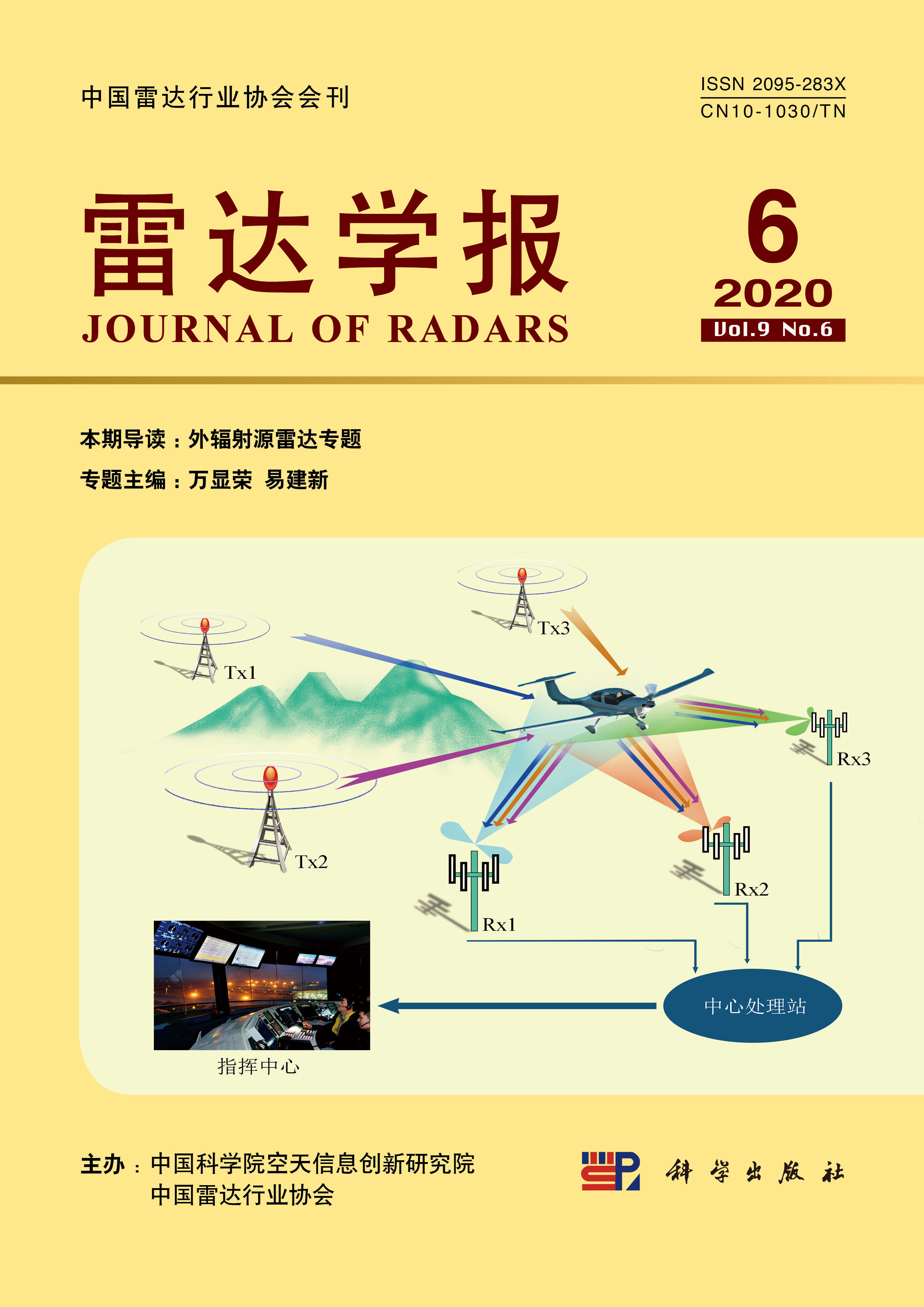

 DownLoad:
DownLoad:
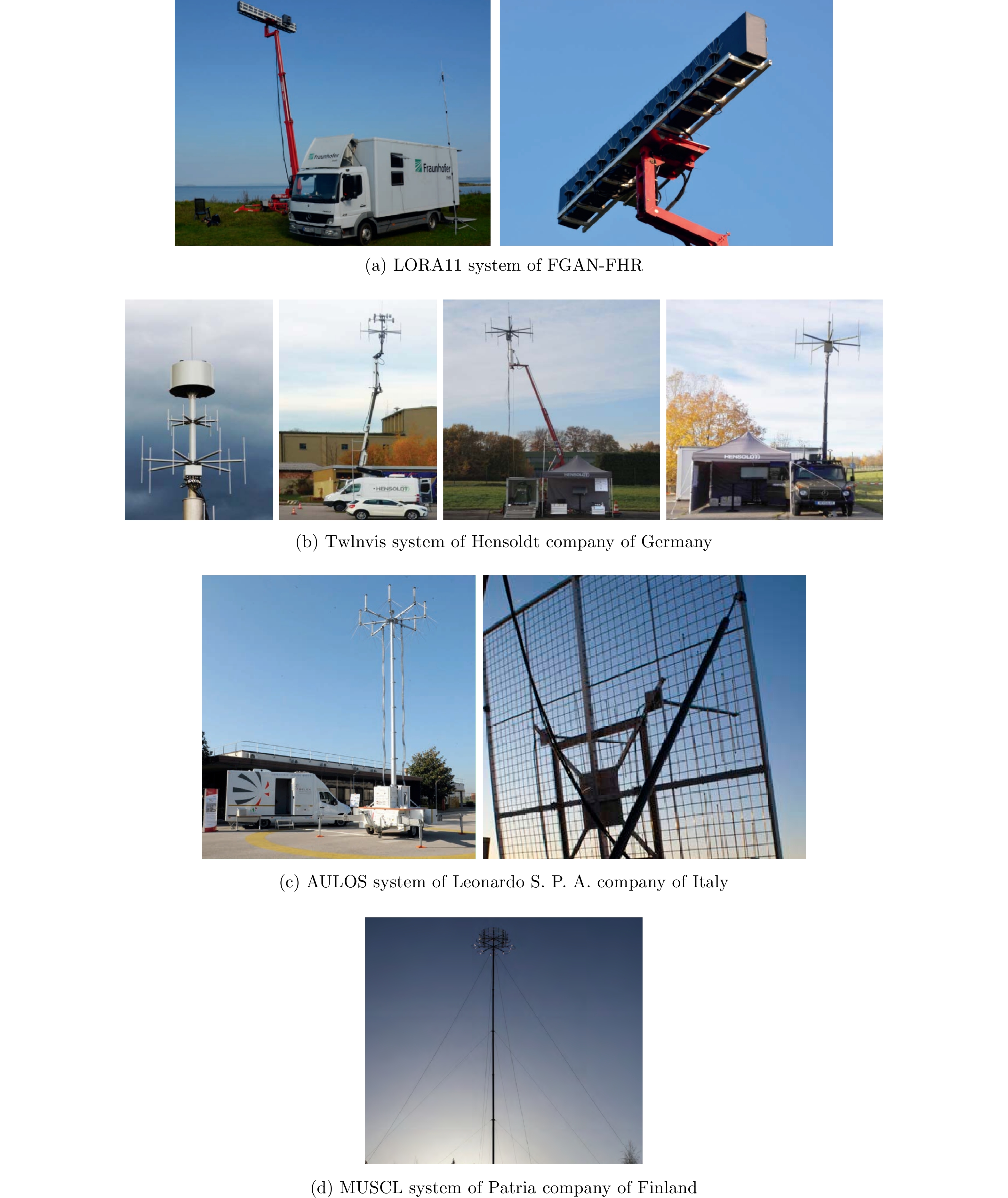

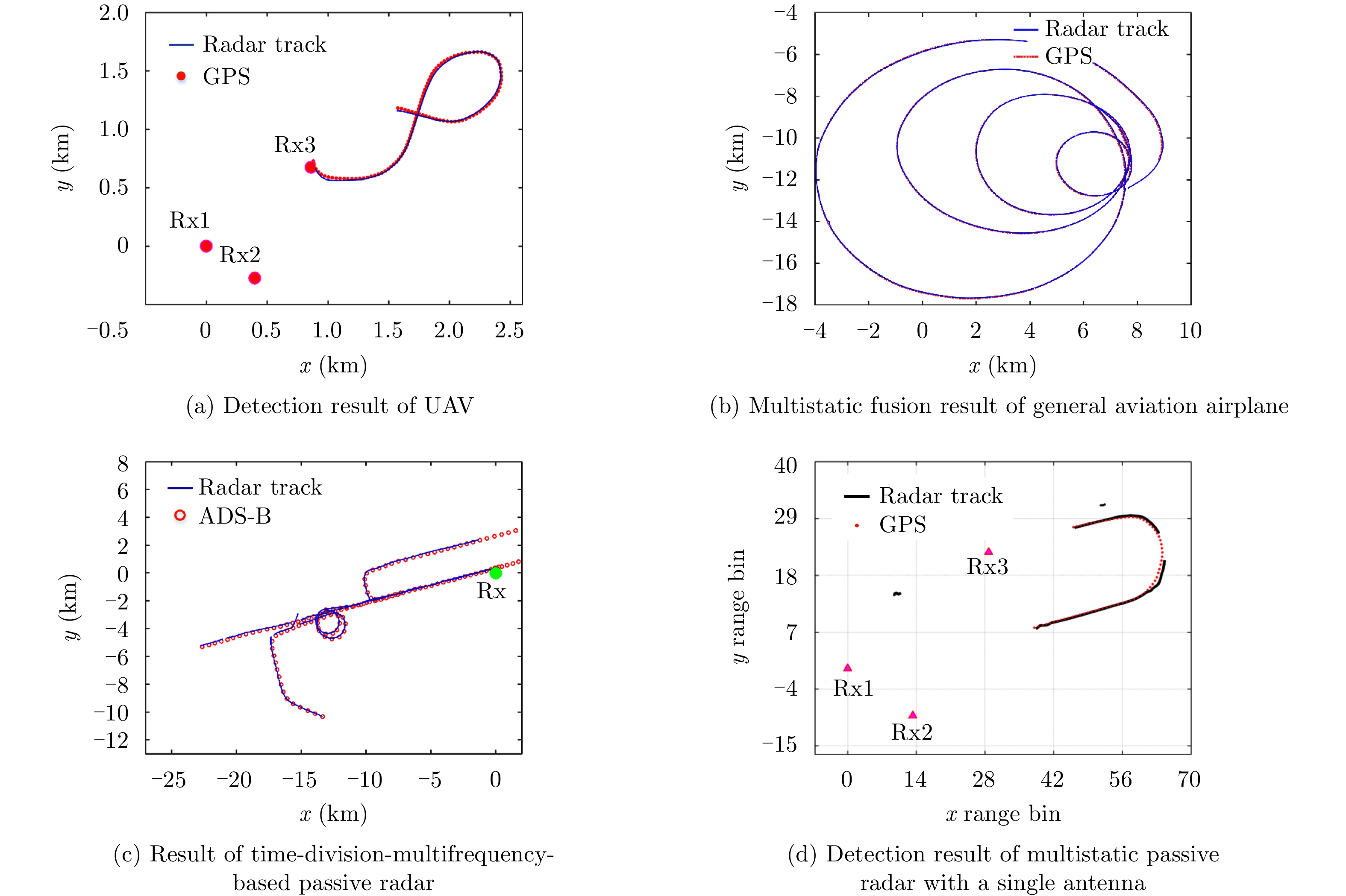
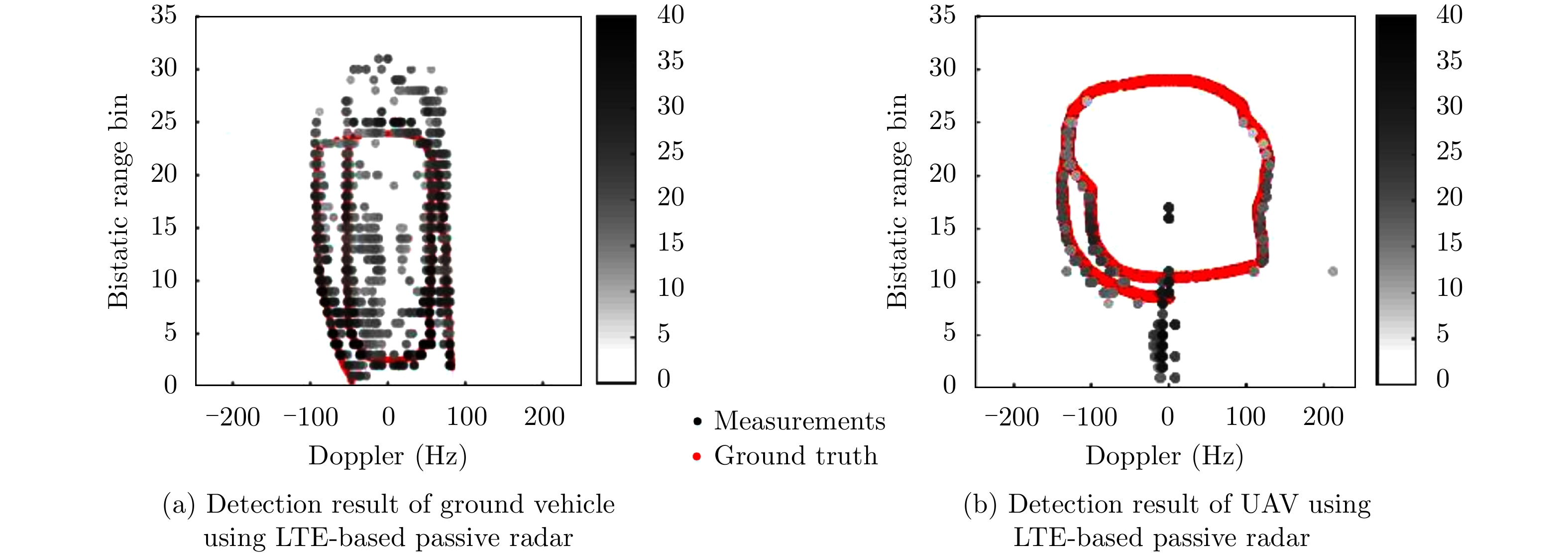
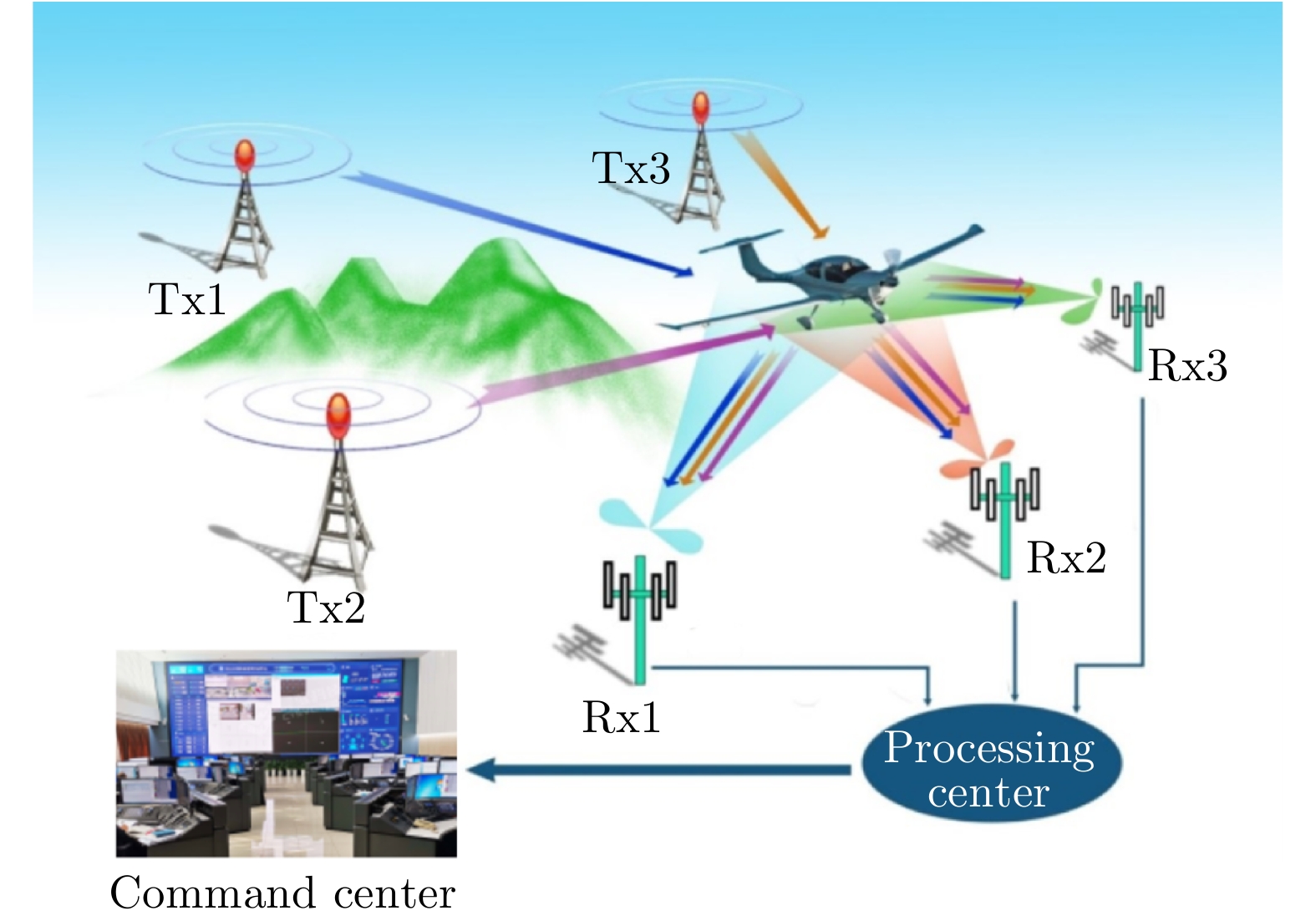
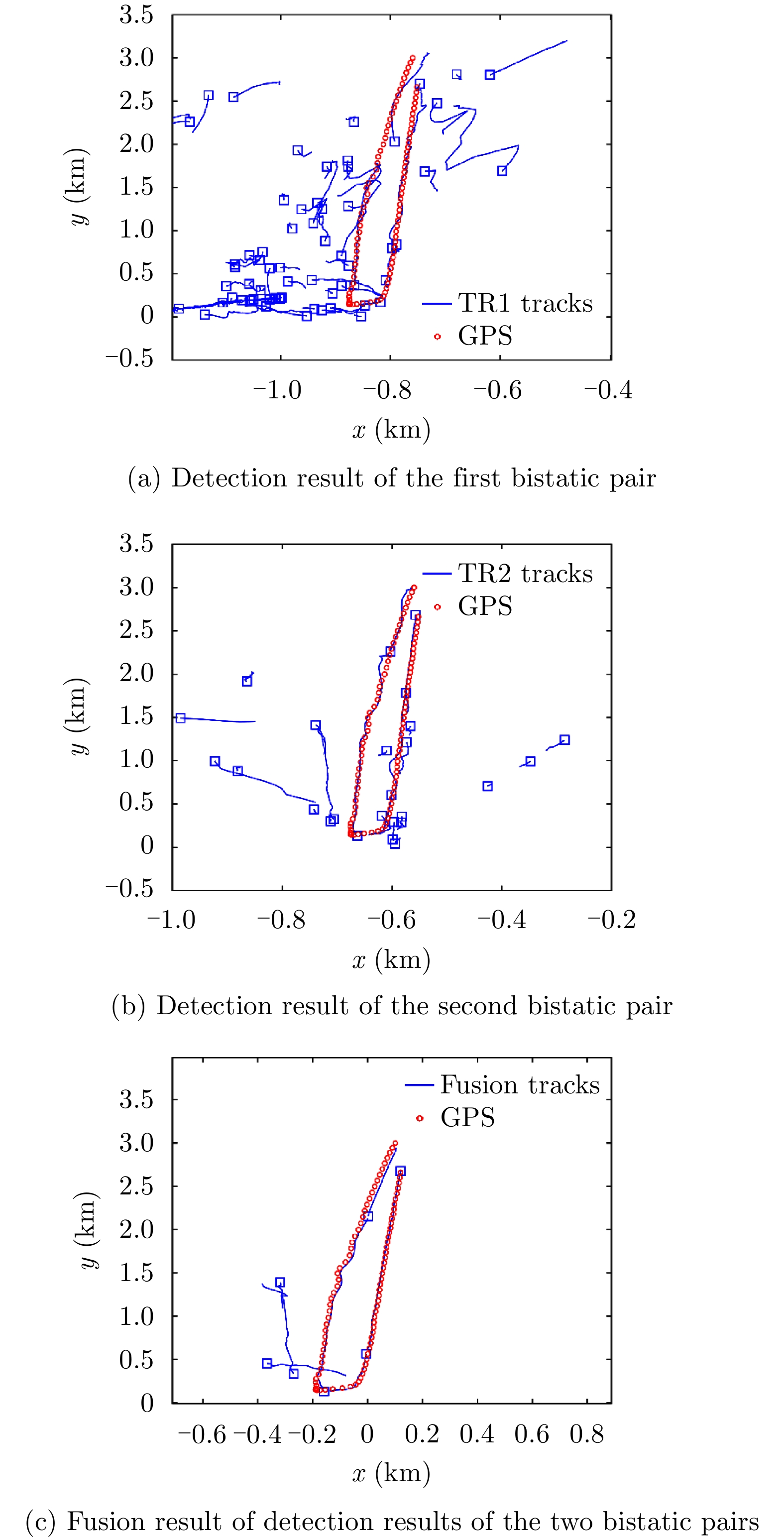
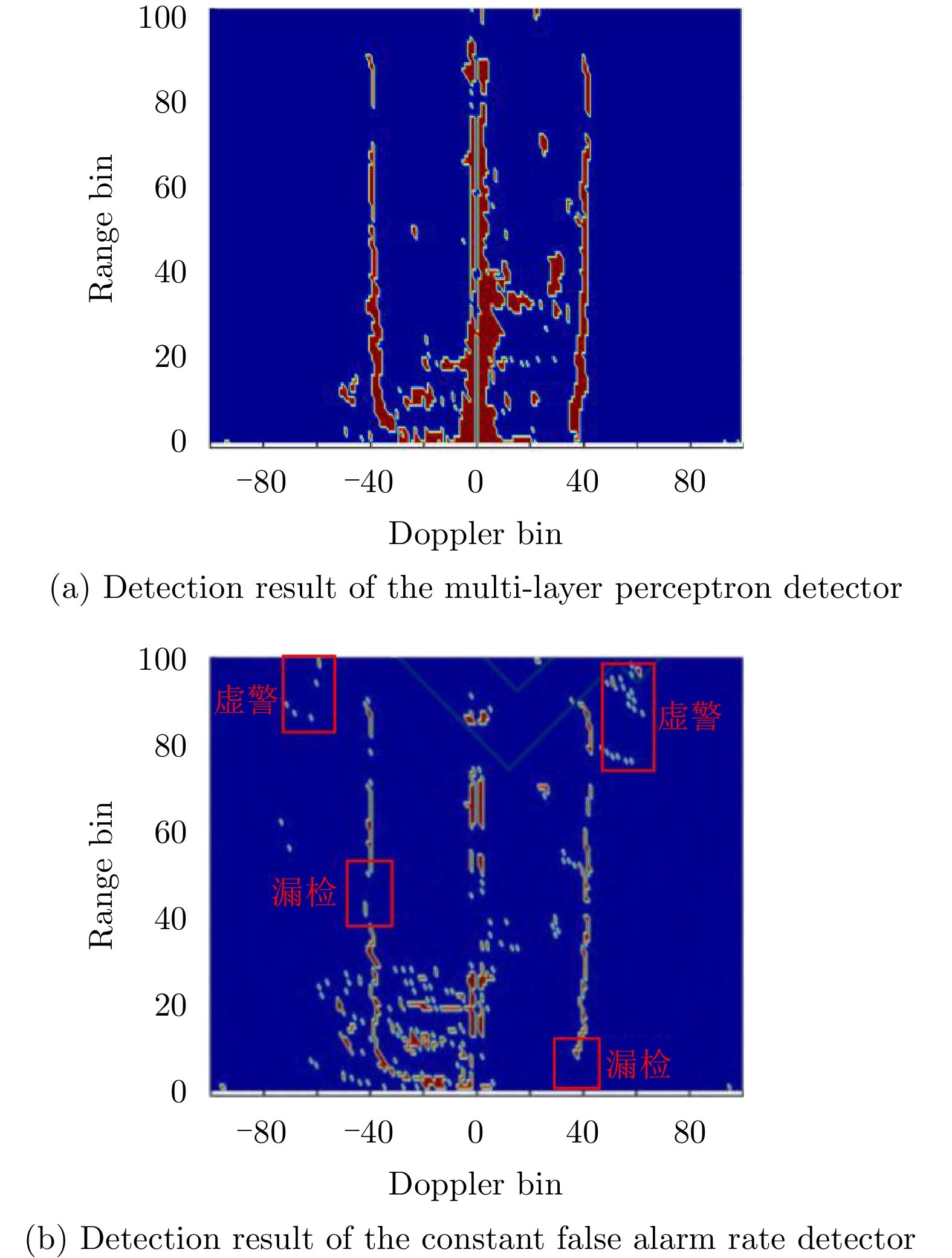

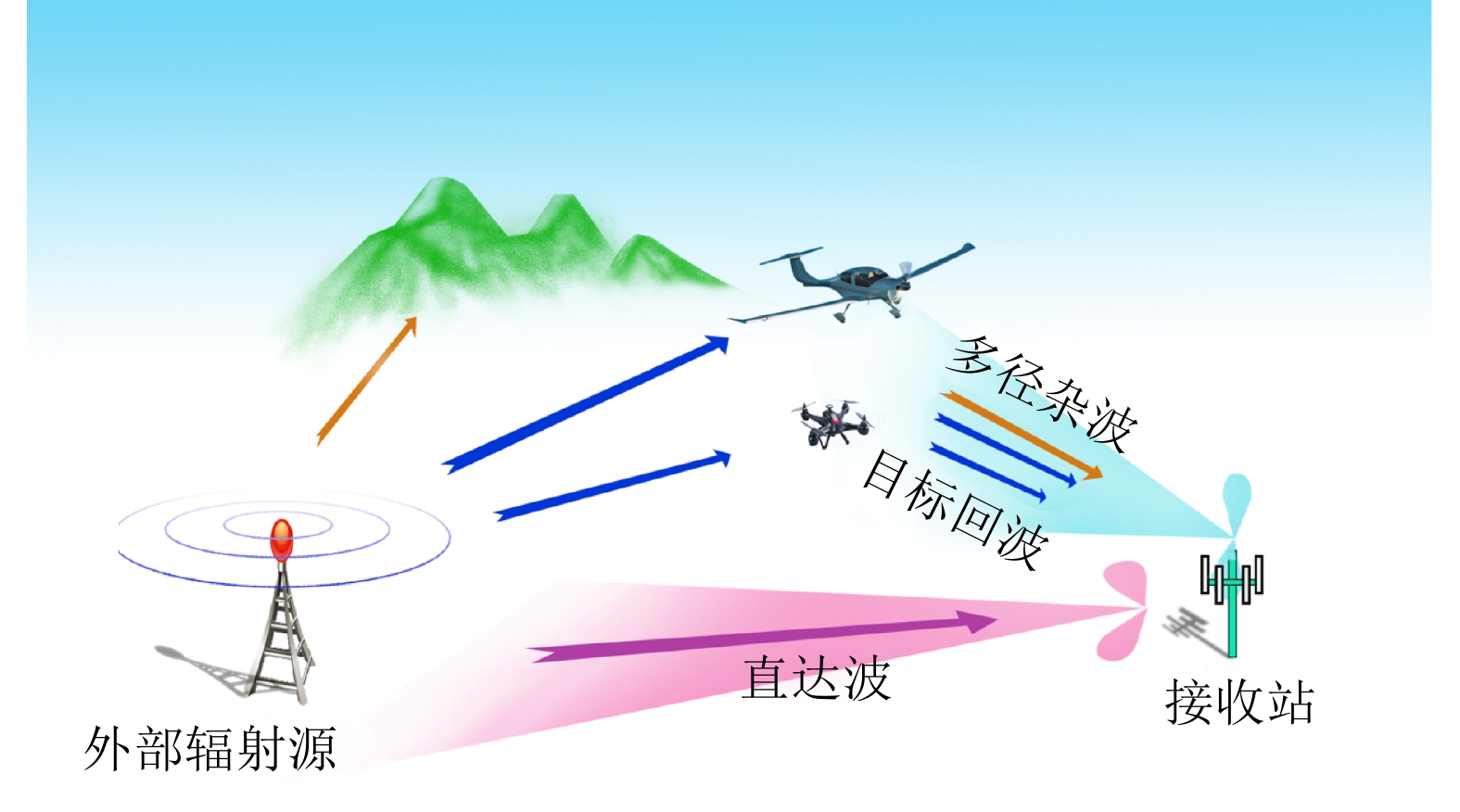



 DownLoad:
DownLoad:
